Despite an instruction not to consider interest in determining damages, and “[a]lthough jurors are presumed to follow jury instructions, that presumption does not prevent the court from observing and acting on an obvious failure to have done so.” Therefore, in Ramsey v. Sheet Pile LLC, when it was apparent that “the jury awarded damages on the loan based on the amount owed as of the date of the verdict, not as of the date [Plaintiff] filed suit,” the proper course was to have the district court offer an appropriate remittitur to restore order to the verdict while also carrying out its obligation to calculate post-judgment interest as an issue of law. No. 23-50911 (March 3, 2025).
Category Archives: Damages
 Reiterating a recent holding in a near-identical lawsuit, in Bourque v. State Farm the Fifth Circuit rejected the certification of a class of insureds who were dissatisfied with the amount paid by State Farm for their wrecked cars:
Reiterating a recent holding in a near-identical lawsuit, in Bourque v. State Farm the Fifth Circuit rejected the certification of a class of insureds who were dissatisfied with the amount paid by State Farm for their wrecked cars:
Plaintiffs contended that they had met this standard because any class member who was paid less than the [National Automobile Dealers’ Association] value of their vehicle necessarily received less than [Actual Cash Value] and therefore suffered an injury. But we rejected that premise, explaining that NADA value was just one of many statutorily acceptable methods for calculating ACV, and therefore pinning ACV to NADA value constituted an impermissibly arbitrary choice of a liability model.
No. 22-30126 (Dec. 22, 2023).
 The “Lyme Wars” are an ongoing medical controversy about the diagnosis and treatment of Lyme disease. Absent Supreme Court review, one front in those “wars” ended in Torrey v. Infectious Diseases Society of America, in which the Fifth Circuit affirmed the dismissal of defamation claims related to statements in a medical journal: “[T[he district court did not err in holding that IDSA’s Guidelines statements about chronic Lyme disease constitute nonactionable medical opinions.” No. 22-40728 (Nov. 16, 2023).
The “Lyme Wars” are an ongoing medical controversy about the diagnosis and treatment of Lyme disease. Absent Supreme Court review, one front in those “wars” ended in Torrey v. Infectious Diseases Society of America, in which the Fifth Circuit affirmed the dismissal of defamation claims related to statements in a medical journal: “[T[he district court did not err in holding that IDSA’s Guidelines statements about chronic Lyme disease constitute nonactionable medical opinions.” No. 22-40728 (Nov. 16, 2023).
 Antero Resoiures Corp. v. C&R Downhole Drilling Inc., an appeal about an $11 million judgment for alleged overbilling in energy production, rejected a second challenge to the plaintiff’s damages calculation in addition to the one discussed yesterday.
Antero Resoiures Corp. v. C&R Downhole Drilling Inc., an appeal about an $11 million judgment for alleged overbilling in energy production, rejected a second challenge to the plaintiff’s damages calculation in addition to the one discussed yesterday.
Specifically, the appellant argued that the expert’s testimony “was deficient because it did not consider what rates competing drillout providers might have paid. Even if the Robertson companies took longer, so the argument goes, if they charged significantly less than other companies, Antero might have ended up paying less than if it had hired someone else.”
The Fifth Circuit rejected this argument for two related resons:
- Legal materiality. “[E]vidence of a competitor’s rate is not necessary to prove out-of pocket damages. To show damages, Antero need only prove that the Robertson companies charged it more than the ‘value [Antero] received.’ By billing Antero more than the services it rendered, Kawcak caused Antero to incur out-ofpocket expenses. That is, Antero paid $150,000,000 in exchange for a certain number of days of work. But because the Robertson companies did not actually work on all of the days they billed, the value of the work Antero received was only $138,877,860. The difference in value is the amount overbilled. No reference to competitors’ rates is needed for that statement to be true.”
- Factual materialty. “[T]he jury was not required to accept Kawcak’s testimony regarding Fortis Energy’s rates. As Antero points out, there are multiple reasons why the jury might not have credited Kawcak’s assertion that Fortis Energy was the only other available drillout provider, and that it would have charged more than the Robertson companies. Kawcak gave the rates strictly from memory, and his credibility was already in question because of his inconsistent answers to previous questions.”
No. 22-10918 (Oct. 31, 2023) (citations omitted).
 Antero Resoiures Corp. v. C&R Downhole Drilling Inc. presented a dispue about the calculation of damages in a case about alleged overbilling in energy production. The Fifth Circuit affirmed against a challenge that the plainitff’s expert was not sufficiently precise, holding:
Antero Resoiures Corp. v. C&R Downhole Drilling Inc. presented a dispue about the calculation of damages in a case about alleged overbilling in energy production. The Fifth Circuit affirmed against a challenge that the plainitff’s expert was not sufficiently precise, holding:
[T]the amount of damages need only be proven “with a reasonable degree of certainty.” Taylor’s testimony calculated Antero’s out-of-pocket damages to a reasonable degree of certainty, especially when viewing the evidence in favor of the verdict. Taylor followed sound analytical methods to determine how long the Robertson companies should have taken to complete the drillout services. He reviewed the hundreds of completion reports and tens of thousands of invoices, accounting for uncontrollable delays and site-specific conditions. Taylor then compared the time spent to the time taken by previous drillout providers and concluded that the Robertson companies took some percentage longer than those companies. Applied to the rates charged by the Robertson companies, Taylor calculated damages in the amount of $11,122,140. That is a perfectly rational way of approximating overbilling.
No. 22-10918 (Oct. 31, 2023) (citation omitted).
Thanks to diversity jurisdiction, the Fifth Circuit reviews some fundamental state-law tort issues along with its loftier docket of constitutional disputes.
In Badeaux v. Louisiana-I Gaming, Badeaux sued for damages after he tripped over a sprinkler head at a casino. The Fifth Circuit affirmed summary judgment for the casino because the sprinkler head was “open and obvious,” noting, inter alia: “There are multiple photographs of the scene showing that: (1) there were working lights in the parking lot on the night of Badeaux’s fall; (2) the sprinkler head was located in a grassy, landscaped area that was separated from the parking lot by a raised curb; and (3) the raised curb surrounding the sprinkler head was painted bright yellow.”
No. 21-30129 (Jan. 20, 2023).
The main issue in Hanover Ins. Co. v. Binnacle Devel., LLC was the interpretation of a Texas Water Code provision about MUDs (“municipal utility districts”) — yes, “MUDdy waters.” Resolution of that issue led to a short discussion as to whether a key contract provision was a damage-limitation clause or a liquidated damages clause, and the Fifth Circuit said:
The damages clause is entitled “LIQUIDATED DAMAGES FOR DELAY/ECONOMIC DISINCENTIVE” and expressly provides for “liquidated damages in the amount of $2,500 for each [] calendar day” of delay. This provision does not, in substance, set a mere limitation of liability or delimit damages to “an agreed maximum.” 24 WILLISTON ON CONTRACTS § 65:6 (4th ed.). Rather, the clause provides that Hassell is liable for the liquidated damages of $2,500 for every day the Projects are late. Looks like a liquidated-damages provision to us.
No. 21-40662 (Jan. 12, 2023).
In a straightforward application of its class-certification and Daubert case law, the Fifth Circuit rejected the certification of a class of aggrieved buyers of tickets to fly on 737 Max planes operated by Southwest Airlines, finding that the buyers suffered no cognizable injury:
[T]he plaintiffs in this suit have not plausibly alleged that they’re any worse off financially because defendants’ fraud allowed Southwest and American Airlines to keep flying the MAX 8 during the class period. If anything, plaintiffs are likely better off financially. If the MCAS defect had been widely exposed earlier, the MAX 8 flights plaintiffs chose would have been unavailable and they’d have had to take different, more expensive (or otherwise less desirable) flights instead.
The Court reasoned that if information about the MAX’s problems had become publicly known earlier than it did, then some combination of Boeing, Southwest, and the FAA would have grounded the MAX (as in fact happened), thus reducing the available supply of tickets and raising prices. Earl v. The Boeing Co., No. 21-40720 (Nov. 21, 2022).
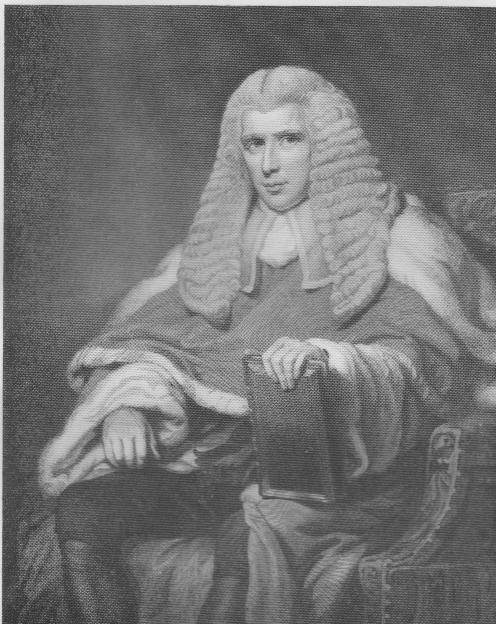 “Foreseeability is a fundamental prerequisite to the recovery of consequential damages for breach of contract.” T & C Devine, Ltd. v. Stericycle, Inc., No. 21-20310 (Nov. 15, 2022) (citation omitted); see also Hadley v. Baxendale, [1854] EWHC J70.
“Foreseeability is a fundamental prerequisite to the recovery of consequential damages for breach of contract.” T & C Devine, Ltd. v. Stericycle, Inc., No. 21-20310 (Nov. 15, 2022) (citation omitted); see also Hadley v. Baxendale, [1854] EWHC J70.
Consistent with that principle, the Fifth Circuit affirmed a summary judgment on a consequential-damage claim when the parties’ contract said that “[a]ll information obtained by [Plaintiff] in any Annual Report . . . shall be retained in the highest degree of confidentiality,” and went on to say: “Neither party may disclose the other party’s Confidential Information to any third party without the other party’s prior written approval.”
Thus: “Devine’s damages were not a probable consequence of the breach from Stericycle’s perspective at the time of contracting because it was not foreseeable that failing to provide confidential cost and expense data would deprive Devine of the opportunity to share that information with potential licensees.”
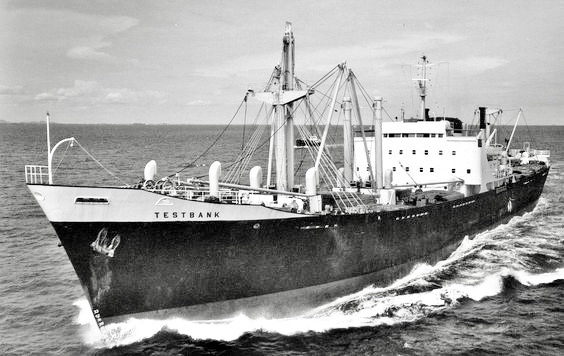 From first-year Torts comes XL Insurance Am., Inc. v. Turn Servcs., LLC, with a discussion of the economic loss rule and the physical injury exception to it.
From first-year Torts comes XL Insurance Am., Inc. v. Turn Servcs., LLC, with a discussion of the economic loss rule and the physical injury exception to it.
- The en banc Fifth Circuit held in Louisiana ex rel. Guste v. M/V TESTBANK, 752 F.2d 1019 (5th Cir. 1985): “Denying recovery for pure economic losses is a pragmatic limitation on the doctrine of foreseeability, a limitation we find to be both workable and useful.”
- But only a few months later, the Fifth Circuit held that “owners of cargo aboard a ship involved in a collision could recover their economic losses, despite their cargo’s being undamaged,” noting that given “a risk-shifting provision in the cargo-owners’ agreement with the ship owner, there was no risk of ‘double recovery, much less runaway recovery.'” Amoco Transp. Co. v. S/S Mason Lykes, 768 F.2d 659 (5th Cir. 1985).
XL Insurance fell on the Amoco side of the line as to $1.254 million in repair costs after an allision. No. 21-30520 (June 10, 2022).
A dispute about “fee forfeiture,” in the broader context of fidiuciary-duty breaches by a company’s lawyer, led to this observation about the proper role of the Burrow v. Arce fee-forfeiture factors: “[T]there is no “windfall” given the record in this case. Hughes unfairly transferred PPI’s assets to Performance Probiotics, in breach of her fiduciary duty to PPI, and then used those assets to generate the fees at issue. That is, even though Hughes was paid by Performance Probiotics, she was effectively paying herself with funds that were rightfully PPI’s. We find no abuse of discretion in the district court’s award of fee forfeiture in this context as it accords with the general rule that disloyal agents must disgorge their ill-gotten gains.” Thomas v. Hughes, No. 20-50671 (March 3, 2022).
 The Marys, landowners in Bienville Parish, Louisiana, complained that a pipeline had exceeded the scope of a servitude over their land, and sought disgorgement of the pipeline’s profits. The Fifth Circuit reviewed “the concepts of accession and fruits under Louisiana property law.” Unfortunately for the Marys, while they had an ownership interest in the intrusive pipeline by “accession,” it was also the case that: “[T]he gas at issue here was not taken from [their] land. It was produced from the Pedro Well, located on the neighbor’s land.” Accordingly, the “gas is not a fruit; it is a product,” and disgorgement was not an available remedy. Mary v. QEP Energy Co., No. 21-30195 (Jan. 18, 2022).
The Marys, landowners in Bienville Parish, Louisiana, complained that a pipeline had exceeded the scope of a servitude over their land, and sought disgorgement of the pipeline’s profits. The Fifth Circuit reviewed “the concepts of accession and fruits under Louisiana property law.” Unfortunately for the Marys, while they had an ownership interest in the intrusive pipeline by “accession,” it was also the case that: “[T]he gas at issue here was not taken from [their] land. It was produced from the Pedro Well, located on the neighbor’s land.” Accordingly, the “gas is not a fruit; it is a product,” and disgorgement was not an available remedy. Mary v. QEP Energy Co., No. 21-30195 (Jan. 18, 2022).
 The key contract provision in Papalote Creek II LLC v. Lower Colorado River Authority said that “[LCRA]’s damages for failure to perform its material obligations under this Agreement shall likewise be limited in the aggregate to sixty million dollars ($60,000,000).” The Fifth Circuit concluded that read in context, this provision referred to damages that LCRA would owe to Papalote (acknowledging authority that, in the abstract, would suggest damages that LCRA would be owed).
The key contract provision in Papalote Creek II LLC v. Lower Colorado River Authority said that “[LCRA]’s damages for failure to perform its material obligations under this Agreement shall likewise be limited in the aggregate to sixty million dollars ($60,000,000).” The Fifth Circuit concluded that read in context, this provision referred to damages that LCRA would owe to Papalote (acknowledging authority that, in the abstract, would suggest damages that LCRA would be owed).
The Court went on to conclude that this provision capped damages available under a specific liquidated-damages provision, finding that another clause dealing with those specific remedies did not displace the language of the cap (It said that “for any provision for which an express and exclusive remedy or measure of damages is provided, such express remedy or measure of damages shall be the sole and exclusive remedy, [and] the obligor’s liability shall be limited as set forth in such provision[.]”). No. 19-50850 (July 16, 2021).
 The Fifth Circuit rejected class claims about the handling of funds in an ERISA plan, identifying a basic standing problem arising from the links in the causal chain of the plaintiffs’ damages theory: “[Plaintiffs’] expert has provided calculations for the returns that they would have earned had they not invested in the FCU Option but had instead placed their money in a stable value fund. This ‘lost investment income’ is a ‘concrete’ and redressable injury for the purposes of standing. That said, another question we must ask is whether Plaintiffs would have in fact invested in a stable value fund to earn the higher returns had [Defendants] never offered the FCU Option. In other words, the question is whether Plaintiffs have demonstrated that it is ‘substantially probable that the challenged acts of the defendant, not of some . . . third party[]’ (including themselves) caused the injury. If anything, the record reveals that Plaintiffs would not have invested in a stable value fund in a counterfactual world since they did not place their money in one when given the opportunity to do so.” (citations omitted, emphasis added). Oritz v. American Airlines, No. 20-10817 (July 19, 2021).
The Fifth Circuit rejected class claims about the handling of funds in an ERISA plan, identifying a basic standing problem arising from the links in the causal chain of the plaintiffs’ damages theory: “[Plaintiffs’] expert has provided calculations for the returns that they would have earned had they not invested in the FCU Option but had instead placed their money in a stable value fund. This ‘lost investment income’ is a ‘concrete’ and redressable injury for the purposes of standing. That said, another question we must ask is whether Plaintiffs would have in fact invested in a stable value fund to earn the higher returns had [Defendants] never offered the FCU Option. In other words, the question is whether Plaintiffs have demonstrated that it is ‘substantially probable that the challenged acts of the defendant, not of some . . . third party[]’ (including themselves) caused the injury. If anything, the record reveals that Plaintiffs would not have invested in a stable value fund in a counterfactual world since they did not place their money in one when given the opportunity to do so.” (citations omitted, emphasis added). Oritz v. American Airlines, No. 20-10817 (July 19, 2021).
 In a will contest, “the district court determined that, because the claims against Craig and Alita were founded on a single deprivation, the loss of the transferred assets, joint and several liability is appropriate.” The Fifth Circuit agreed, quoting the Restatement (First) of Restitution section cited by the district court: “Where a claim against two persons is founded upon a single deprivation as it is where a tort resulting in a single harm has been committed by two persons concurrently or acting in cooperation, the injured person, while having a cause of action against each of the parties for the entire amount of injury, is entitled only to one satisfaction. If he obtains judgment against one and it is satisfied, he thereby loses his claim against the other.” (citation omitted). In other words, “this part of the Restatement ‘effectively imposes joint and several liability on a restitution defendant when the action is founded ‘upon a single deprivation.’” Great American Life v. Tanner, No. 20-60588 (July 16, 2021).
In a will contest, “the district court determined that, because the claims against Craig and Alita were founded on a single deprivation, the loss of the transferred assets, joint and several liability is appropriate.” The Fifth Circuit agreed, quoting the Restatement (First) of Restitution section cited by the district court: “Where a claim against two persons is founded upon a single deprivation as it is where a tort resulting in a single harm has been committed by two persons concurrently or acting in cooperation, the injured person, while having a cause of action against each of the parties for the entire amount of injury, is entitled only to one satisfaction. If he obtains judgment against one and it is satisfied, he thereby loses his claim against the other.” (citation omitted). In other words, “this part of the Restatement ‘effectively imposes joint and several liability on a restitution defendant when the action is founded ‘upon a single deprivation.’” Great American Life v. Tanner, No. 20-60588 (July 16, 2021).
WickFire won a tortious-interference judgment against TriMax. It claimed that TriMax “committed ‘click fraud’ by repeatedly clicking on WickFire’s advertisements without any intention of making purchases,” which has the effect of driving up WickFire’s costs without any corresponding increase in revenues. The Fifth Circuit reversed, noting:
- Tortious interference with contract. “WickFire produced evidence that a third party had a deleterious financial effect on its bottom line. But as was the case in El Paso Healthcare System, the record here fails to indicate that WickFire’s damages occurred because a co-contracting party breached its agreement with WickFire.”
- Tortious interference with prospective business relations. “WickFire’s damages theory for this claim was grounded in the assertions that TriMax’s tortious conduct delayed the development of TheCoupon.co website by six months and that WickFire lost $334,000 in profits because of that delay. When WickFire’s damages expert was asked how he calculated that dollar figure, the expert said that he had ‘quantified those damages by calculating the amount of profits that [WickFire] lost because of the six-month delay.’ He did not testify as to how he performed that calculation, nor did he point to any data concerning the business generated by TheCoupon.co. This evidence is threadbare and conclusory.”
Wickfire LLC v. Woodruff, No. 17-50340 (Feb. 26, 2021).
 In Williams v. MMO Behavioral Health Systems, the Fifth Circuit affirmed a $244,000 judgment for defamation, entered after a jury trial. Good record keeping often benefits defendants in employment-related litigation, but in this case it helped the plaintiff on a key issue:
In Williams v. MMO Behavioral Health Systems, the Fifth Circuit affirmed a $244,000 judgment for defamation, entered after a jury trial. Good record keeping often benefits defendants in employment-related litigation, but in this case it helped the plaintiff on a key issue:
Before MMO had published the statement to the [Louisiana Workforce Commission], Williams had informed MMO that she did not falsify her timecard. This should have led MMO to examine Williams’s timecard. If MMO had done so, it would have discovered that even though Williams regularly clocked in every day, the timecard facially showed that someone else clocked in Williams on July 5th. This fact indicates that MMO should have known that Williams was not the one falsifying her timecard. The times for which Williams was clocked in on July 5th were also not her normal working hours, further suggesting that Williams was not the one to clock in on July 5th. Moreover, Williams did not fill out a missed-clock-punch form, which would have been necessary to allow someone else to clock her in or out, suggesting that Williams was not even involved with this July 5th clocking in and out.
No. 19-30757 (July 9, 2020) (unpublished).
 Last week, I noted the holding in Gulf Engineering Co. v. Dow Chemical Co. about the construction of the parties’ contract (Dow had the right, but not the obligation, to assign work to Gulf Engineering during the relevant period of time). Not surprisingly, this holding caused trouble for the plaintiff’s damages model:
Last week, I noted the holding in Gulf Engineering Co. v. Dow Chemical Co. about the construction of the parties’ contract (Dow had the right, but not the obligation, to assign work to Gulf Engineering during the relevant period of time). Not surprisingly, this holding caused trouble for the plaintiff’s damages model:
“… The only evidence of how the details of daily or weekly assignments can be known is that Dow used oral and written communication that included the issuing of work orders and job schedules. What Gulf needed to offer were details about any assigned work. That would include evidence of such variables as the nature of the work, the number of employees needed, and the number of days needed to complete the work. In other words, what was needed in some form was evidence relevant to allow a calculation of what Dow would have paid and what Gulf’s expenses would have been, i.e., what Gulf’s profit would have been. Instead, the only evidence was an average from an historic time period, where all those variables were blended.
As we explained earlier, the evidence of any assigned work after the notice of termination barely suffices to show liability. For us then to allow the evidence offered of daily-average profits over one or five years to substitute for actual profits for actual assigned work is a bridge too far. …”
No. 19-30395 (June 9, 2020) (emphasis added).
 Hewlett-Packard proved $176 million in antitrust damages at trial (later trebled); the defendant argued that HP had not proved it was a direct purchaser of the optical drives at issue. The Fifth Circuit affirmed. On the two key points, it held:
Hewlett-Packard proved $176 million in antitrust damages at trial (later trebled); the defendant argued that HP had not proved it was a direct purchaser of the optical drives at issue. The Fifth Circuit affirmed. On the two key points, it held:
- Expert testimony. Under the proper standard of review, this testimony by HP’s damages expert sufficed: “[W]e did quite a lot of work to understand the data that we received; and it was my understanding, based on that work, that the data was purchases by the plaintiff HP, Inc. formerly known as Hewlett-Packard Company. . . . In the data files that I received, the transactions identified the supplier; and in any cases in which the supplier was identified as an HP entity, I excluded those . . . . ”
- Fact testimony. Any uncertainty in the following testimony by an HP executive was not enough to unseat the above-quoted expert conclusion:
Q. And so in a procurement event you have an ODD supplier and a purchaser, an entity that purchases. Did HP, Inc. . . . was that the purchaser in all of these procurement events that you have described?
 A. It was some form of HP. I don’t know that it was HP, Inc., but it was a legal entity of HP, somewhere in the region that these were purchased, that purchased the drives.
A. It was some form of HP. I don’t know that it was HP, Inc., but it was a legal entity of HP, somewhere in the region that these were purchased, that purchased the drives.
Q. So the purchaser might not have been HP, Inc. at a particular procurement event? It might have been some subsidiary of HP, Inc.?
A. It could well have been, yes. . . . I’m not exactly sure on how that was spread out, but it could very well have been.
Hewlett-Packard Co. v. Quanta Storage, No. 19-20799 (June 5, 2020). A longer version of this post appears in the Texas Lawbook.
In Jacked Up LLC v. Sara Lee Corp., the plaintiff’s expert “seems to have assumed
that the projections in the Sara Lee Pro Forma were correct and then extrapolated lost-profits figures.” But the record also contained a detailed explanation by the defendant’s marketing director about why “the assumptions in the pro formas are merely
elaborate guesswork by the business and sales teams” until there are actual product sales. Accordingly, the Fifth Circuit affirmed the exclusion of the expert under a basic Daubert principle: “Expert evidence that is not ‘reliable at each and every step’ is not admissible.” No. 19-10391 (April 3, 2020) (unpublished). (citation omitted). (LPHS represented the successful appellee in this case.)
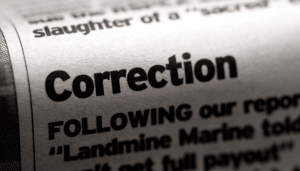 The Fifth Circuit’s recent opinion in Illinois Tool Works v. Rust-Oleum, also rejected the plaintiff’s award of damages for corrective advertising, holding:
The Fifth Circuit’s recent opinion in Illinois Tool Works v. Rust-Oleum, also rejected the plaintiff’s award of damages for corrective advertising, holding:
“Illinois Tool Works has never even asserted that it plans to run corrective advertising. It did not say what the advertising might consist of, offer a ballpark figure of what it might cost, or provide even a rough methodology for the jury to estimate the cost. Damages need not be proven with exacting precision, but they cannot be based on pure speculation. . . . Illinois Tool Works . . . argues that it was not required to show that it ‘needs’ the award, and that its 40 years of goodwill and tens of millions of dollars spent on advertising, coupled with RustOleum’s expenditures, support the unremitted amount. . . . [I]t does not explain how its decades of goodwill and past advertising expenditures show a loss or justify compensation in any amount. These bald facts lack inherent explanatory value. So these arguments fail.”
No. 19-20210 (April 9, 2020).
 This is a cross-post from 600Hemphill, which follows the Texas Supreme Court:
This is a cross-post from 600Hemphill, which follows the Texas Supreme Court:
Henry McCall lived in a cabin on Homer Hillis’s property, occasionally helping Hillis with maintenance at the McCall’s bed-and-breakfast. While working on Hillis’s sink, a brown recluse spider bit McCall. The Texas Supreme Court found that  the ferae naturae doctrine barred McCall’s lawsuit against Hillis: “[H]e owed no duty to the invitee because he was unaware of the presence of brown recluse spiders on his property and he neither attracted the offending spider to his property nor reduced it to his possession. Further, [McCall] had actual knowledge of the presence of spiders on the property.” Hillis v. McCall, No. 18-1065 (Tex. March 13, 2020). In addition to its impact on brown-recluse litigation, the reasoning of this opinion about liability for small, dangerous creatures well be relevant in any future litigation about coronavirus exposure.
the ferae naturae doctrine barred McCall’s lawsuit against Hillis: “[H]e owed no duty to the invitee because he was unaware of the presence of brown recluse spiders on his property and he neither attracted the offending spider to his property nor reduced it to his possession. Further, [McCall] had actual knowledge of the presence of spiders on the property.” Hillis v. McCall, No. 18-1065 (Tex. March 13, 2020). In addition to its impact on brown-recluse litigation, the reasoning of this opinion about liability for small, dangerous creatures well be relevant in any future litigation about coronavirus exposure.
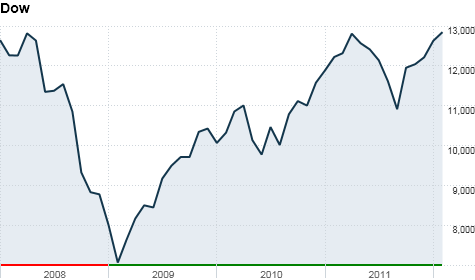 What is a “sole, superseding cause”? BP Exploration v. Claimaint ID 100191715 did not resolve the question, but found an argument sufficiently credible to require a remand for further review in the Deepwater Horizon claims process: “BP argues that Claimant passed the V-Shaped Revenue Pattern due solely to a price spike and drop in the price of fertilizer that was unrelated to the oil spill. According to BP, the spike caused Claimant’s revenues to soar and crash back down to normal rates thereafter. And, only because Claimant used months during the price spike as its benchmark period was it able to satisfy the ‘V-Shape Revenue Pattern’ test in Exhibit 4B. In other words, Claimant’s loss was not due to the spill; rather, the price spike in fertilizer was the sole, superseding cause for its loss.” No. 19-30264 (March 3, 2020).
What is a “sole, superseding cause”? BP Exploration v. Claimaint ID 100191715 did not resolve the question, but found an argument sufficiently credible to require a remand for further review in the Deepwater Horizon claims process: “BP argues that Claimant passed the V-Shaped Revenue Pattern due solely to a price spike and drop in the price of fertilizer that was unrelated to the oil spill. According to BP, the spike caused Claimant’s revenues to soar and crash back down to normal rates thereafter. And, only because Claimant used months during the price spike as its benchmark period was it able to satisfy the ‘V-Shape Revenue Pattern’ test in Exhibit 4B. In other words, Claimant’s loss was not due to the spill; rather, the price spike in fertilizer was the sole, superseding cause for its loss.” No. 19-30264 (March 3, 2020).
 “[S]tatutory damages do not only approximate a copyright owner’s consequential damages. Statutory damages also serve an independent deterrent purpose; therefore, mitigation rules do not wholly preclude recovery of statutory damages.” Energy Intelligence Group, Inc. v. Kayne Anderson Capital Advisors, LP, No. 18-20350 (Jan .15, 2020). This case also provides a case study in the multiplication of copyright damages resulting from the unauthorized recirculation of a copyrighted publication.
“[S]tatutory damages do not only approximate a copyright owner’s consequential damages. Statutory damages also serve an independent deterrent purpose; therefore, mitigation rules do not wholly preclude recovery of statutory damages.” Energy Intelligence Group, Inc. v. Kayne Anderson Capital Advisors, LP, No. 18-20350 (Jan .15, 2020). This case also provides a case study in the multiplication of copyright damages resulting from the unauthorized recirculation of a copyrighted publication.
Among other challenges to a $65 million arbitration award, Catic USA disputed the claimants’ damages calculation. The Fifth Circuit rejected the challenge, in part because the shortcomings were of Catic’s own making: “Catic USA does not contest that AVIC’s anticipated rate of return was 15% or that the panel employed an appropriate discount rate; instead, it attacks the panel’s assumption that AVIC’s investment did (or would) generate profits. It is true that, although the amount of lost profits may be estimated, claimants generally ‘must show that there would [have been] some future profits’ but for the breach. But in this case, Catic USA has refused to provide the relevant information, and it was thus within the arbitration panel’s authority to infer that AVIC’s investment was indeed profitable.” Soaring Wind Energy LLC v. Catic USA Inc., No. 18-11192 (Jan. 7, 2020) (citation omitted, emphasis added). .
 A Chevron dispute about the Department of the Interior’s collection of natural gas royalties led to the question whether “the agency must credit all of W&T’s prior overdeliveries in calculating the cumulative delivery shortfall.” Observing that the defense of “equitable recoupment is ‘never barred by the statute of limitations so long as the main action itself is timely,'” the Fifth Circuit rejected the Department’s three arguments against its application – looking to three common reference points for resolving such disputes:
A Chevron dispute about the Department of the Interior’s collection of natural gas royalties led to the question whether “the agency must credit all of W&T’s prior overdeliveries in calculating the cumulative delivery shortfall.” Observing that the defense of “equitable recoupment is ‘never barred by the statute of limitations so long as the main action itself is timely,'” the Fifth Circuit rejected the Department’s three arguments against its application – looking to three common reference points for resolving such disputes:
- Statutory limitations. A statutory prohibition on “pursu[it of] any other equitable or legal remedy, whether under statute or common law” did not clearly preclude the assertion of this defense;
- Factual linkage. “This objection is easily dispatched, as the Department of the Interior’s requirement that payments be made on a monthly basis does not trump the reality that each monthly obligation arises from a single contract: the lease.
- Overall equities. The Department’s facially “neutral application of the statute of limitations across the industry does not counteract the inequitable result that W&T suffered . . . .”
W&T Offshore v. Bernhardt, No. 18-30876 (Dec. 23, 2019).
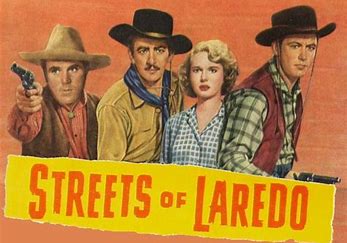 Longoria, a truck driver in Laredo, prevailed in a 3-day jury trial about his injuries arising from an accident, and won judgment for $2.8 million in total, based on the jury’s awards as to nine types of damages. The Fifth Circuit noted these points, among others, in reviewing the defendant’s appeal of that judgment:
Longoria, a truck driver in Laredo, prevailed in a 3-day jury trial about his injuries arising from an accident, and won judgment for $2.8 million in total, based on the jury’s awards as to nine types of damages. The Fifth Circuit noted these points, among others, in reviewing the defendant’s appeal of that judgment:
- Sufficiency v. Excessiveness. “The sufficiency challenge asks only whether there is any evidence for a jury’s award; if there is, the judge’s job is at an end. An excessiveness challenge requires more extensive scrutiny, including—as will be seen—consideration of verdicts in similar cases. And we review the district court’s decision on remittitur only for an abuse of discretion. We cannot assess whether such discretion was abused if the district court was not asked to exercise it in the first instance.”
- Federal v. State. In a review for excessiveness: “The state/federal issue is presented because Texas does not use the maximum recovery rule. It instead conducts a more holistic assessment at both stages of the inquiry.”
- Pain. “This pain is significant. But an award of $1 million is ‘contrary to the overwhelming weight of the evidence,’ given that Longoria can mostly manage the pain by stretching and taking over-the-counter medicine.”
- Anguish. “Longoria points to his fear that he may be unable to keep working as a truck driver. He testified that this occupation is his ‘childhood dream’ and that without it, he could not support his family. But Longoria is cleared to work, and no doctor indicated his ability to work may change in the future. His understandable concern for the future is not the high degree of distress or frequent disruption Texas law requires.”
Longoria v. Hunter Express, No. 17-41042 (Aug. 1, 2019).
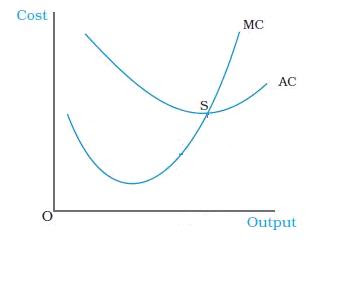 Tow v. Organo Gold Int’l presented a challenge, in a trade-secrets case, to a damages model based on “avoided costs” rather than “lost profits.” Specifically: “Weingust [Plaintiff’s expert] concluded that the distributor network was worth approximately $3.451 million based on the following two methodologies: the cost approach showed AmeriSciences had incurred about $6.2 million over five years to develop the distributor network, attract new distributors, and retain existing ones. The income approach considers how long income is expected from the asset and the amount of income each year. Weingust concluded the income approach dictated the network would generate $700,327 over ten years. Weingust testified that neither valuation method was better than the other, so he averaged the two to conclude the value of the distributor network was $3.451 million.” This model was consistent with – indeed, expressly allowed by – GlobeRanger Corp. v. Software AG, 836 F.3d 477, 499 (5th Cir. 2016). No. 18-20394 (July 11, 2019).
Tow v. Organo Gold Int’l presented a challenge, in a trade-secrets case, to a damages model based on “avoided costs” rather than “lost profits.” Specifically: “Weingust [Plaintiff’s expert] concluded that the distributor network was worth approximately $3.451 million based on the following two methodologies: the cost approach showed AmeriSciences had incurred about $6.2 million over five years to develop the distributor network, attract new distributors, and retain existing ones. The income approach considers how long income is expected from the asset and the amount of income each year. Weingust concluded the income approach dictated the network would generate $700,327 over ten years. Weingust testified that neither valuation method was better than the other, so he averaged the two to conclude the value of the distributor network was $3.451 million.” This model was consistent with – indeed, expressly allowed by – GlobeRanger Corp. v. Software AG, 836 F.3d 477, 499 (5th Cir. 2016). No. 18-20394 (July 11, 2019).
 “The complaint alleges that during the April and October 2016 phone calls, the defendants negligently misrepresented to Mr. Dick that ‘reinstatement was not an option’ and that ‘there was nothing [the] Plaintiff could do to stop a foreclosure.’ The plaintiff’s claim that these misrepresentations prevented her from reinstating the loan merely repackages her claim for breach of contract based on the duty to cooperate. It is therefore barred by the economic loss rule.” Dick v. Colorado Housing Enterprises LLC, No. 18-10900 (July 5, 2019) (unpublished).
“The complaint alleges that during the April and October 2016 phone calls, the defendants negligently misrepresented to Mr. Dick that ‘reinstatement was not an option’ and that ‘there was nothing [the] Plaintiff could do to stop a foreclosure.’ The plaintiff’s claim that these misrepresentations prevented her from reinstating the loan merely repackages her claim for breach of contract based on the duty to cooperate. It is therefore barred by the economic loss rule.” Dick v. Colorado Housing Enterprises LLC, No. 18-10900 (July 5, 2019) (unpublished).
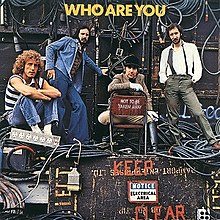 A multi-million dollar judgment, in favor of a bankruptcy trustee suing for the estate, foundered on two problems about party identity:
A multi-million dollar judgment, in favor of a bankruptcy trustee suing for the estate, foundered on two problems about party identity:
- Injury? The estate (LSI) had no standing to seek damages about a substantial debt incurred to an alleged insider (Jabil), because: “[T]he millions of dollars awarded under Damage Element No. 1 represent Jabil’s injury, not LSI’s. Jabil manufactured and delivered the contractually agreed upon equipment to LSI. LSI benefitted from the equipment, and Ebert even leased and sold the equipment in Chapter 11 proceedings. Moreover, LSI did not pay the invoices on the equipment. Therefore, LSI benefitted and even had cash available for other needs.” (emphasis in original)
- Benefit? Stock sales involving affiliated entities did not established a personal benefit to alleged insiders (Apfel and Bartlett): “[E]bert tacitly admits that she
 provided evidence only for the nominee companies’ gains, not for Appel and Bartlett in their individual capacity. Manz’s calculations were based primarily on two documents: Schedule 7.B, which showed market sales of LSI stock, and a list of nominee companies with how many shares of LSI each owned as of September 9, 2011. Yet these documents only list companies and provide no proof of or insight into Appel and Bartlett as individuals.”
provided evidence only for the nominee companies’ gains, not for Appel and Bartlett in their individual capacity. Manz’s calculations were based primarily on two documents: Schedule 7.B, which showed market sales of LSI stock, and a list of nominee companies with how many shares of LSI each owned as of September 9, 2011. Yet these documents only list companies and provide no proof of or insight into Appel and Bartlett as individuals.”
Ebert v. DeJoria, No 18-10382 (April 30, 2019).
 Beckton Dickson & Co., a manufacturer of safety syringes, lost its antitrust claims against a competitor but prevailed on its Lanham Act claims, and sought the remedy of disgorgement. A panel majority concluded that:
Beckton Dickson & Co., a manufacturer of safety syringes, lost its antitrust claims against a competitor but prevailed on its Lanham Act claims, and sought the remedy of disgorgement. A panel majority concluded that:
[T]he district court did not abuse its discretion in determining that where [Defendant Retractable Technologies, Inc.] had not sufficiently demonstrated that its business suffered due to BD’s false advertising and where BD had already taken significant steps to correct the false statements, disgorgement was not equitable. That another court could have evaluated the facts differently does not justify reversal, especially as “an award of profits with no proof of harm is an uncommon remedy in a false advertising suit.”
The majority’s reasoning is best summarized by the final paragraph of its opinion, which observes:
The district court’s denial of disgorgement of profits from RTI’s competitor was made against the larger backdrop of its prosecution of a meritless antitrust claim against BD for conduct in the marketplace—during a time in which RTI nearly doubled its own sales and increased its share of the retractable syringe sub-market to two-thirds. RTI elected not to test its proof of Lanham Act damages before the jury, but rather to later argue, as now, that equity mandates disgorgement. Its effort to carry the flag of “public interest” and guide the profits of its competitor to its own coffers here must fail. That effort must be taken outside—to the marketplace. There the public interest is best vindicated.
A dissent thought that the district court had exceeded its mandate after a previous appeal. Retractable Technologies, Inc. v. Beckton Dickinson Inc., No. 17-40960 (March 26, 2019). Professor Rebecca Tushnet recently discussed the case on her 43(B) blog.
 Emphasizing a significant difference between Texas and federal practice, ENI US Operating Co. v. Transocean clarified Circuit precedent and held: “Under [Fed. R. Civ. P.] 52(a), implicit findings will not automatically be inferred to support a conclusory ultimate finding. The district court must lay out enough subsidiary findings to allow us to glean ‘a clear understanding of the analytical process by which [the] ultimate findings were reached and to assure us that the trial court took care in ascertaining the facts.” Finding that the district court’s reasoning was insufficiently developed under this standard, the Fifth Circuit remanded for more detailed findings on a key point. The Court also reversed on two other issues of
Emphasizing a significant difference between Texas and federal practice, ENI US Operating Co. v. Transocean clarified Circuit precedent and held: “Under [Fed. R. Civ. P.] 52(a), implicit findings will not automatically be inferred to support a conclusory ultimate finding. The district court must lay out enough subsidiary findings to allow us to glean ‘a clear understanding of the analytical process by which [the] ultimate findings were reached and to assure us that the trial court took care in ascertaining the facts.” Finding that the district court’s reasoning was insufficiently developed under this standard, the Fifth Circuit remanded for more detailed findings on a key point. The Court also reversed on two other issues of 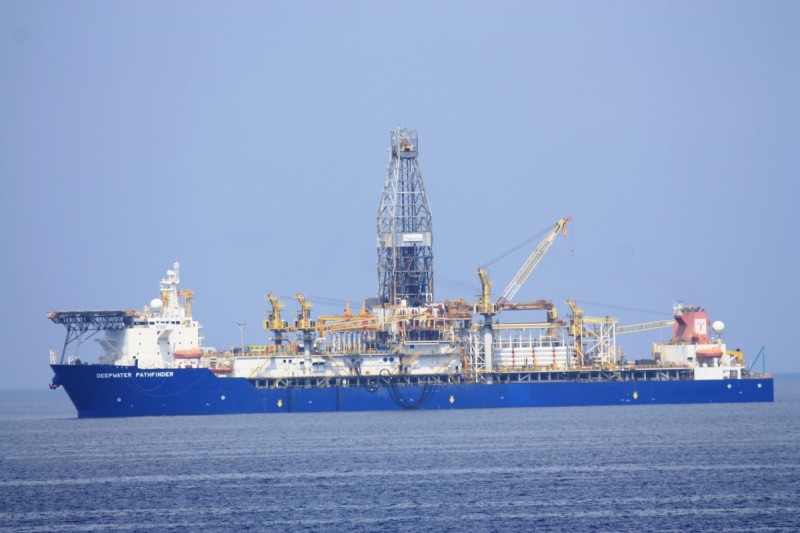 contract law:
contract law:
- A clause referring to an indemnity obligation for “special, indirect, or consequential damages,” while a “limitation on the type of damages allowed . . . says nothing about what type of claims can be brought” (and thus, does not preclude a breach-of-warranty action); and
- A damages calculation based on a steady contract price was flawed because “it looks to what Eni actually did
 after termination, when the operative question is what Eni would have done in a non-breach world. . . . The district court should have attempted to determine, in the hypothetical non-breach world, how many days the Pathfinder [above, left] would have spent at each applicable rate.”
after termination, when the operative question is what Eni would have done in a non-breach world. . . . The district court should have attempted to determine, in the hypothetical non-breach world, how many days the Pathfinder [above, left] would have spent at each applicable rate.”
No. 18-20115 (March 28, 2019).
 The Pugas received a substantial judgment in their favor after a jury trial, arising from a collision with a truck controlled by RXC Solutions. The Fifth Circuit substantially affirmed, holding, inter alia:
The Pugas received a substantial judgment in their favor after a jury trial, arising from a collision with a truck controlled by RXC Solutions. The Fifth Circuit substantially affirmed, holding, inter alia:
- Preservation. The defendant’s FRCP 50(b) motion, based on the argument that federal law does not allow courts to hold motor carriers liable for the acts of independent contractors, was not permissible when its 50(a) motion only attacked the sufficiency of the evidence about the driver’s employee status and alleged negligence;
- Jury charge. The district court did not abuse its discretion when it “closely examined the statute, avoided the obvious, overbroad definition of motor carrier, and picked out the correct, limited definition.”
- Expert testimony. The defendant’s objections to the testimony of an accident investigator went to weight rather than admissibility, even though “[i]t did not take into account every possible explanation for the accident, and some measurements were missing.”
- Remittitur. “We measure disproportionality by applying a percentage enhancement to past similar awards. This enhancement is 50% for jury trials.”
Puga v. RCX Solutions, Inc., No. 17-41282 (Feb. 1, 2019).
 A gruesome series of automobile accidents led to a fundamental question about causation and insurance coverage in Evanston Ins. Co. v. Mid-Continent Casualty Co.: “Over a ten-minute period on November 15, 2013, the insured’s Mack truck struck (1) a Dodge Ram, (2) a Ford F150, (3) a Honda Accord, (4) a toll plaza, and (5) a Dodge Charger. . . . [T]he Mack truck’s primary insurer refused to contribute more than $1 million toward the settlements of the final three collisions, claiming that they were part of a single ‘accident’ under its policy.” Examining the reference points about this question under Texas law, the Fifth Circuit noted that:
A gruesome series of automobile accidents led to a fundamental question about causation and insurance coverage in Evanston Ins. Co. v. Mid-Continent Casualty Co.: “Over a ten-minute period on November 15, 2013, the insured’s Mack truck struck (1) a Dodge Ram, (2) a Ford F150, (3) a Honda Accord, (4) a toll plaza, and (5) a Dodge Charger. . . . [T]he Mack truck’s primary insurer refused to contribute more than $1 million toward the settlements of the final three collisions, claiming that they were part of a single ‘accident’ under its policy.” Examining the reference points about this question under Texas law, the Fifth Circuit noted that:
- Eight specific sales from one shipment of contaminated bird seed created eight separate occurrences;
- Two fires, set by the same arsonist “several blocks and at least two hours apart,” created two separate occurrences; and
- “[A]n HEB employee’s sexual abuse of two different children, a week apart, at an HEB store” created separate occurrences; however,
- A flawed three-hour crop dusting that damaged the land of several neighbors created one occurrence, even though “the plane had landed several times to refuel . . . [and] the temperature, wind, and altitude varied during the several passes over different sections of thee property”; and
- Two separate storms that damaged the same drilling rig created two separate occurrences.
Under the principles behind these cases, the Court found that the harm caused by the Mack truck’s driver created a single occurrence: “Absent any indication that the driver regained control of the truck or that his negligence was otherwise interrupted between collisions . . . all of the collisions resulted from the same continuous condition – the unbroken negligence of the Mack truck driver.” No. 17-20812 (Nov. 19, 2018).
In a win for our firm’s client, the Fifth Circuit affirmed last year’s $3 million trial win by Mike Lynn and John Volney for Prince Mansour bin Abdullah Al-Saud, in a succinct opinion touching on the parol evidence rule, speculative damages, and ways to cure a pleading problem with respect to the recovery of attorneys’ fees. Al-Saud v. Youtoo Media, No. 17-10622 (Oct. 22, 2018).
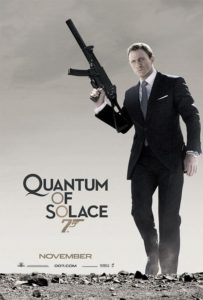 The Fifth Circuit reversed a defense summary judgment in a trade secrets dispute in Brand Services LLC v. Irex Corp., noting inter alia –
The Fifth Circuit reversed a defense summary judgment in a trade secrets dispute in Brand Services LLC v. Irex Corp., noting inter alia –
- Discovery. In its summary judgment analysis, the district court should have addressed a discovery motion filed by the non-movant: “Brand Services claims it moved to compel immediately after discovering the responsive documents in the Pennsylvania litigation. There is some indication that Brand Services could not have reasonably discovered these documents sooner: Irex’s initial blanket objections to Brand Services’s discovery request were grossly improper, and thereafter Irex did little to comply with Brand Services’s requests. Therefore, Brand Services was arguably diligent in seeking these documents even though it did not discover them until after the discovery deadline had passed. At a minimum, Irex’s conduct in this discovery proceeding is highly questionable and bears further examination in light of the exemplar documents.”
- Damages. “Although Brand Services provided little in the way of detail about its
 claim that it spent ‘millions’ to design the software allegedly stolen, it has, at a minimum, provided some evidence from which a jury could reasonably estimate unjust enrichment damages. For example, it demonstrated that Irex’s use of the
claim that it spent ‘millions’ to design the software allegedly stolen, it has, at a minimum, provided some evidence from which a jury could reasonably estimate unjust enrichment damages. For example, it demonstrated that Irex’s use of the
allegedly stolen information saved Irex at least two to three days a month in time spent invoicing. Even assuming that Irex’s administrative personnel worked only an eight-hour day for minimum wage during those two to three days saved, this is a reasonable inference of unjust-enrichment damages.”
No. 17-30660 (revised Nov. 21, 2018).
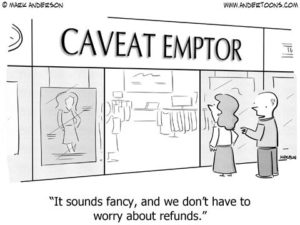 “Aetna’s reliance on any alleged misrepresentation by NCMC was not justifiable. Almost immediately after NCMC notified Aetna of its prompt pay discount, Aetna began investigating. Its investigation revealed NCMC’s billing practices. Yet Aetna continued to pay claims marked with the prompt pay discount moniker.” In support, the Fifth Circuit cited the recent and influential case of JPMorgan Chase v. Orca Assets, 546 S.W.3d 648 (Tex. 2018), and “promoted” the unpublished case of Highland Crusader Offshore Partners v. LifeCare Holdings, 377 F. App’x 422 (5th Cir. 2010), observing: “The panel recognizes that Highland Crusader is unpublished, and therefore not precedential, but we cite it here to show consistency throughout our case law.” North Cypress Medical Center v. Aetna, No. 16-20674 (July 31, 2018).
“Aetna’s reliance on any alleged misrepresentation by NCMC was not justifiable. Almost immediately after NCMC notified Aetna of its prompt pay discount, Aetna began investigating. Its investigation revealed NCMC’s billing practices. Yet Aetna continued to pay claims marked with the prompt pay discount moniker.” In support, the Fifth Circuit cited the recent and influential case of JPMorgan Chase v. Orca Assets, 546 S.W.3d 648 (Tex. 2018), and “promoted” the unpublished case of Highland Crusader Offshore Partners v. LifeCare Holdings, 377 F. App’x 422 (5th Cir. 2010), observing: “The panel recognizes that Highland Crusader is unpublished, and therefore not precedential, but we cite it here to show consistency throughout our case law.” North Cypress Medical Center v. Aetna, No. 16-20674 (July 31, 2018).
 Villareal sought to redeem five certificates of deposit purchased in the early 1980s. His primary legal theory, apparently selected to avoid problems with suing on the instruments themselves, was the quasi-contractual / restitution theory recognized in Texas law for “money had and received.” That theory ordinarily does not apply when an express contract (here, the CDs) addresses the subject. To escape that limitation, Villareal relied on Texas authority under which “an overpayment beyond what a contract provides may sometimes be recovered as unjust enrichment. If an overpayment qualifies as unjust enrichment, reasoned the district court, so should an underpayment.” (citation omitted, emphasis in original). The Fifth Circuit disagreed: “Overpayment typically falls outside a contract’s terms and, in that event, the contract would not ‘cover[] the subject matter of the parties’ dispute.’ By contrast, here the dispute involved the claimed non-payment of a debt evidenced by express contracts (the CDs). Unjust enrichment has no role to play.” (citation omitted, emphasis in original). Villareal v. Presidio Nat’l Bank (revised), No. 17-50765 (July 27, 2018, unpublished). (Picture above of Professor Samuel Williston eyeing some of his extensive work on express contracts).
Villareal sought to redeem five certificates of deposit purchased in the early 1980s. His primary legal theory, apparently selected to avoid problems with suing on the instruments themselves, was the quasi-contractual / restitution theory recognized in Texas law for “money had and received.” That theory ordinarily does not apply when an express contract (here, the CDs) addresses the subject. To escape that limitation, Villareal relied on Texas authority under which “an overpayment beyond what a contract provides may sometimes be recovered as unjust enrichment. If an overpayment qualifies as unjust enrichment, reasoned the district court, so should an underpayment.” (citation omitted, emphasis in original). The Fifth Circuit disagreed: “Overpayment typically falls outside a contract’s terms and, in that event, the contract would not ‘cover[] the subject matter of the parties’ dispute.’ By contrast, here the dispute involved the claimed non-payment of a debt evidenced by express contracts (the CDs). Unjust enrichment has no role to play.” (citation omitted, emphasis in original). Villareal v. Presidio Nat’l Bank (revised), No. 17-50765 (July 27, 2018, unpublished). (Picture above of Professor Samuel Williston eyeing some of his extensive work on express contracts).
 Plaintiff argued, for purposes of a UCC Article 2 damages calculation, that a pollution monitoring system was worthless because it was not practically repairable. The Fifth Circuit disagreed – language in an earlier Mississippi case about whether a good “could not be repaired and was worthless” was not “the same as ‘the goods were worthless because they could not be repaired.’ While it is true that an unrepairable good may also be worthless, it does not follow that such a good is always worthless.” The Court also found, as to a limitation-of-remedy provision: “Here, Altech provided an exclusive repair or replace warranty. The warranty failed of its essential purpose when Altech—over the course of years—was continually unable to repair the [system].” Steel Dynamics v. Alltech Environment, No. 17-60298 (May 17, 2018, unpublished).
Plaintiff argued, for purposes of a UCC Article 2 damages calculation, that a pollution monitoring system was worthless because it was not practically repairable. The Fifth Circuit disagreed – language in an earlier Mississippi case about whether a good “could not be repaired and was worthless” was not “the same as ‘the goods were worthless because they could not be repaired.’ While it is true that an unrepairable good may also be worthless, it does not follow that such a good is always worthless.” The Court also found, as to a limitation-of-remedy provision: “Here, Altech provided an exclusive repair or replace warranty. The warranty failed of its essential purpose when Altech—over the course of years—was continually unable to repair the [system].” Steel Dynamics v. Alltech Environment, No. 17-60298 (May 17, 2018, unpublished).
 The plaintiff won a multi-million dollar lawsuit about the sale of Akaushi cattle (example, to right), a specialty breed from Japan valued for its exceptional flavor, and made difficult to acquire as a result of export restrictions on what Japan regards “as a national treasure.” The Fifth Circuit affirmed in large part, reaching these holdings of broader interest:
The plaintiff won a multi-million dollar lawsuit about the sale of Akaushi cattle (example, to right), a specialty breed from Japan valued for its exceptional flavor, and made difficult to acquire as a result of export restrictions on what Japan regards “as a national treasure.” The Fifth Circuit affirmed in large part, reaching these holdings of broader interest:
- The jury found that the defendant “committed fraud by misrepresenting ‘that it intended to sell to [Plaintiff] 30% of its calves and that it would comply with the restrictions in the 2010’ Full-Blood Contracts” that set a number of specification s about registration, marketing, etc. Because “Texas courts have upheld fraud claims based on representations with less specificity,” the defendant’s sufficiency challenge was rejected.
- Despite testimony about millions of dollars in potential harm, the actual judgment awarded equitable relief. Because “the district court’s equitable remedy protected [Plaintiff] from actual harm[, its] harm is limited to presumed harm, and that is insufficient under Texas law to justify an award of punitive damages” in addition to the equitable relief.

- In affirming a calculation made in connection with the equitable remedies, the Court reminded of “the purpose of the law of disgorgement[,] under which ‘a disgorgement order might be for an amount more or less than that required to make the victims whole.'”
Bear Ranch LLC v. Heartland Beef, Inc., No. 16-41261 (March 20, 2018).
 “[Kansas City] Southern [Railway] was caught between hundreds of thousands of tons of rock and a hard place.” Problems with the construction of a new rail line in South Texas resulted in a dispute about payment for 74,260 tons of “rail ballast” – crushed stone that forms the base for the train tracks. The railway won the resulting litigation against its contractor, and the Fifth Circuit rejected several rocks thrown at the damages model, observing:
“[Kansas City] Southern [Railway] was caught between hundreds of thousands of tons of rock and a hard place.” Problems with the construction of a new rail line in South Texas resulted in a dispute about payment for 74,260 tons of “rail ballast” – crushed stone that forms the base for the train tracks. The railway won the resulting litigation against its contractor, and the Fifth Circuit rejected several rocks thrown at the damages model, observing:
- Acknowledging that the payments made had to be reasonable, the Court reminded that “magic words” are not needed, and found that on this record: “Reasonableness can thus be demonstrated by the general market prices Southern was paying for these expenses before it had any knowledge that some excess ballast costs would be passed on to Balfour via litigation.
- Evidence of post-breach costs was appropriate, as the substantive damage calculation looks at the difference between “what Southern expected” and “the cost Southern ultimately had to pay (value received)”;
- Southern acted appropriately, and the defenses of waiver and quasi-estoppel did not apply: “It could have refused to ship additional ballast at Balfour’s request, but that would have necessitated stopping the project, finding a new contractor, and
resuming later, all of which likely would have cost substantially more than the
damages awarded here. Southern had a duty to mitigate as much as possible.
It did so by allowing Balfour to finish the project and then determining the
extent of damages.”
Concluding that the record was rock-solid, the Court affirmed. Balfour Beatty Rail v. Kansas City Southern Railway, No. 16-11645 (Feb. 15, 2018, unpublished).
 In United States v. Ganji, the Fifth Circuit reversed criminal convictions for conspiracy to commit health care fraud, noting (among other problems) these weaknesses in the government’s proof – weaknesses that could also appear in suits alleging civil conspiracies:
In United States v. Ganji, the Fifth Circuit reversed criminal convictions for conspiracy to commit health care fraud, noting (among other problems) these weaknesses in the government’s proof – weaknesses that could also appear in suits alleging civil conspiracies:
- Witness perspective. “The Government’s dependence on these witnesses is almost as peculiar as the scheme’s discovery. Notably, these individuals worked in the Hammond area, while Dr. Ganji and Davis worked sixty miles away in the New Orleans area. . . . Unlike other salient cases involving conspiracy to commit health care fraud, here the Government presented eighteen witnesses, none of whom could provide direct evidence of their alleged co-conspirator’s actions because the witnesses never acted with the defendants to commit the specific charged conduct.”
- Inference from job responsibilities. “The Government’s attempt to ascribe Davis with knowledge and agreement because of her position in the company falls far short of the necessary requirement for guilt beyond a reasonable doubt. One cannot negligently enter into a conspiracy.”
- Plausible alternative explanations. “Finally, the Government points to the nefarious Ponchatoula meeting. It argues that Davis would not have otherwise asked Dr. Murray to meet her to sign documents that included certification forms had she not agreed to participate in a conspiracy to defraud Medicare. Again, here the direct evidence is not on the Government’s side. . . . [T]he record illustrates a different, reasonable explanation for the meeting.”
No. 16-31119-CR (Jan. 30, 2018).
 The Fifth Circuit affirmed a JNOV motion on damages, under Texas law, when the plaintiff proved gross profits rather than net profits. “Its expert witness testified that he used ThermoTek’s gross profit margin—gross sales, less the cost of those goods sold, divided by gross sales—to calculate lost profits. He then stated that he reached his lost-profit totals for the VascuTherm units and wraps by (1) multiplying the average sales ThermoTek made to Wilford each month by the unit sales price and relevant time period, and (2) deducting the cost of the goods sold. But that is the very definition of gross profits. See Black’s Law Dictionary, supra (defining gross profits as “[t]otal sales revenue less the cost of the goods sold, no adjustment being made for additional expenses and taxes”). Motion Medical Technologies v. Thermotek, No. 16-11381 (Nov. 14, 2017).
The Fifth Circuit affirmed a JNOV motion on damages, under Texas law, when the plaintiff proved gross profits rather than net profits. “Its expert witness testified that he used ThermoTek’s gross profit margin—gross sales, less the cost of those goods sold, divided by gross sales—to calculate lost profits. He then stated that he reached his lost-profit totals for the VascuTherm units and wraps by (1) multiplying the average sales ThermoTek made to Wilford each month by the unit sales price and relevant time period, and (2) deducting the cost of the goods sold. But that is the very definition of gross profits. See Black’s Law Dictionary, supra (defining gross profits as “[t]otal sales revenue less the cost of the goods sold, no adjustment being made for additional expenses and taxes”). Motion Medical Technologies v. Thermotek, No. 16-11381 (Nov. 14, 2017).
 Plaintiff, invoking classical concepts about the measure of damages, argued that a “reliance” or “restitution” measure was superior to “expectancy” as applied to the breach of a stock-purchase contract. The Fifth Circuit disagreed: “Here, the jury found that there was an express contract, the stock agreement, so under Texas law, Jinsun may not recover anything beyond its expectancy damages unless Jinsun shows that the stock agreement is an exception to the general rule. Jinsun has failed to do so. Here, Jinsun expected to receive $56,000 from Alidad in exchange for the block of Luxeyard stock. Whether the stock price went up or down following the stock transfer, Jinsun was entitled to receive $56,000 from Alidad—no more and no less. Its expectancy damages under the plain terms of the express contract are therefore $56,000—no more and no less.” Jinsun LLC v. Mireskandari, No. 16-20275 (Oct. 5, 2017).
Plaintiff, invoking classical concepts about the measure of damages, argued that a “reliance” or “restitution” measure was superior to “expectancy” as applied to the breach of a stock-purchase contract. The Fifth Circuit disagreed: “Here, the jury found that there was an express contract, the stock agreement, so under Texas law, Jinsun may not recover anything beyond its expectancy damages unless Jinsun shows that the stock agreement is an exception to the general rule. Jinsun has failed to do so. Here, Jinsun expected to receive $56,000 from Alidad in exchange for the block of Luxeyard stock. Whether the stock price went up or down following the stock transfer, Jinsun was entitled to receive $56,000 from Alidad—no more and no less. Its expectancy damages under the plain terms of the express contract are therefore $56,000—no more and no less.” Jinsun LLC v. Mireskandari, No. 16-20275 (Oct. 5, 2017).
 The Fifth Circuit affirmed an award of $232,809.92 in costs on an unsuccessful FCA claim, noting: “The district court acknowledged that [Defendant]’s invoices were not detailed but explained that, given nearly three million pages of copies [Defendant] produced for its defense in this case,it would have been impossible for [Defendant] to explain each page’s usefulness.” It also allowed recovery for “costs relating to (1) TIFF image conversion, (2) scanning, (3) formatting electronic documents, and (4) PDF conversion – per [28 U.S.C.] § 1920(4), which allows recovery for ‘exemplification’ and ‘making copies’ of case materials.” In a similar vein, the Court credited the district court’s explanation that the statute “allow[s] a prevailing party to recover the costs of complying with an opposing party’s request to reformat electronic documents or scan hard copies of documents.” United States ex rel King v. Solvay Pharmaceuticals, Inc., No. 160259 (Sept. 12, 2017).
The Fifth Circuit affirmed an award of $232,809.92 in costs on an unsuccessful FCA claim, noting: “The district court acknowledged that [Defendant]’s invoices were not detailed but explained that, given nearly three million pages of copies [Defendant] produced for its defense in this case,it would have been impossible for [Defendant] to explain each page’s usefulness.” It also allowed recovery for “costs relating to (1) TIFF image conversion, (2) scanning, (3) formatting electronic documents, and (4) PDF conversion – per [28 U.S.C.] § 1920(4), which allows recovery for ‘exemplification’ and ‘making copies’ of case materials.” In a similar vein, the Court credited the district court’s explanation that the statute “allow[s] a prevailing party to recover the costs of complying with an opposing party’s request to reformat electronic documents or scan hard copies of documents.” United States ex rel King v. Solvay Pharmaceuticals, Inc., No. 160259 (Sept. 12, 2017).
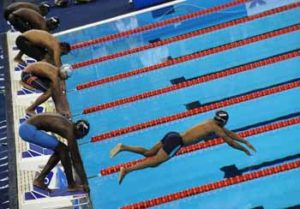 In Hills v. Entergy Operations, Inc., a case about overtime pay for security guards, the Fifth Circuit reversed a summary judgment based upon a conclusion about two guards’ lack of damage. While the Court’s holding was based upon technical issues of employment law, its underlying reasoning is of broader applicability: “We reverse the district court’s summary judgment that the fluctuating workweek method applies here as a matter of law. The underlying factual issue upon which the applicabilty of that method is predicated, what the employees clearly understood, should be decided at trial in due course.” No. 16-30924 (Aug. 4, 2017). Also, in a ruling of general interest about administrative law, the Court declined to follow an interpretive letter by the Department of Labor.
In Hills v. Entergy Operations, Inc., a case about overtime pay for security guards, the Fifth Circuit reversed a summary judgment based upon a conclusion about two guards’ lack of damage. While the Court’s holding was based upon technical issues of employment law, its underlying reasoning is of broader applicability: “We reverse the district court’s summary judgment that the fluctuating workweek method applies here as a matter of law. The underlying factual issue upon which the applicabilty of that method is predicated, what the employees clearly understood, should be decided at trial in due course.” No. 16-30924 (Aug. 4, 2017). Also, in a ruling of general interest about administrative law, the Court declined to follow an interpretive letter by the Department of Labor.
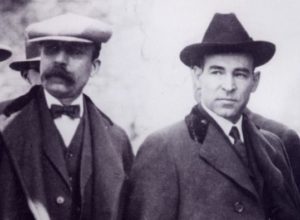 In the course of affirming a substantial judgment for misappropriation of trade secrets, the Fifth Circuit made an interesting observation in a footnote about liability for civil conspiracy under Texas law: “For instance, [Defendant] argues he is entitled to judgment on the conspiracy to misappropriate claim because such a claim is barred by Texas’ intra-corporate conspiracy doctrine, i.e., that a corporation and its employees cannot conspire with each other in carrying out a company’s business. He has presented no case applying it to the instant situation, where the conspiracy predated even the creation of the company at issue. Here, [Defendant] stole [Plaintiff’s] trade secrets months before the creation of SXP, and the creation and operation of SXP was the means by which the conspiracy was carried out.” Quantlab Technologies v. Kuharsky, No. 16-20242 (June 22, 2017, unpublished).
In the course of affirming a substantial judgment for misappropriation of trade secrets, the Fifth Circuit made an interesting observation in a footnote about liability for civil conspiracy under Texas law: “For instance, [Defendant] argues he is entitled to judgment on the conspiracy to misappropriate claim because such a claim is barred by Texas’ intra-corporate conspiracy doctrine, i.e., that a corporation and its employees cannot conspire with each other in carrying out a company’s business. He has presented no case applying it to the instant situation, where the conspiracy predated even the creation of the company at issue. Here, [Defendant] stole [Plaintiff’s] trade secrets months before the creation of SXP, and the creation and operation of SXP was the means by which the conspiracy was carried out.” Quantlab Technologies v. Kuharsky, No. 16-20242 (June 22, 2017, unpublished).
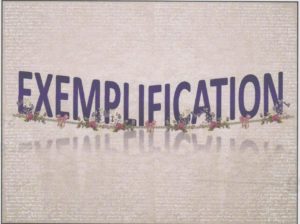 While otherwise affirming a judgment in the plaintiff’s favor, in Merrit Hawkins & Associates v. Gresham the Fifth Circuit vacated an award of exemplary damages under Texas law in a non-compete case. It distinguished the plaintiff’s authorities by saying: “Unlike in those cases, the only argument and evidence that [plainitff] MHA presented to the jury on the issue of exemplary damages was that [defendant] Consilium intentionally breached the non-compete contract. MHA claimed that ‘the circumstances of this case [were] quite egregious, that everything was intentional, [Consilium] knew [MHA] had these agreements . . . and they breached them anyway.’ However, this is the exact type of argument that the Texas Supreme Court explains is insufficient to show malice when an element of the underlying cause of action is willful harm. Even drawing all inferences in favor of MHA, the additional evidence MHA points to is insufficient to show that Consilium acted with specific intent to cause substantial harm to MHA. The proximity of the two businesses, without more, does not lead to the conclusion that Consilium acted with malice towards MHA. And the fact that Consilium’s founder was a partner at MHA was not raised for the purpose of showing that MHA engaged in a strategic plan of hiring away MHA employees to harm it, but rather to show that Consilium was aware that MHA’s employees had non-compete agreements. Moreover, MHA has never claimed that Consilium induced [the employee] to steal or use its proprietary information . . . .” No. 16-10439 (June 21, 2017).
While otherwise affirming a judgment in the plaintiff’s favor, in Merrit Hawkins & Associates v. Gresham the Fifth Circuit vacated an award of exemplary damages under Texas law in a non-compete case. It distinguished the plaintiff’s authorities by saying: “Unlike in those cases, the only argument and evidence that [plainitff] MHA presented to the jury on the issue of exemplary damages was that [defendant] Consilium intentionally breached the non-compete contract. MHA claimed that ‘the circumstances of this case [were] quite egregious, that everything was intentional, [Consilium] knew [MHA] had these agreements . . . and they breached them anyway.’ However, this is the exact type of argument that the Texas Supreme Court explains is insufficient to show malice when an element of the underlying cause of action is willful harm. Even drawing all inferences in favor of MHA, the additional evidence MHA points to is insufficient to show that Consilium acted with specific intent to cause substantial harm to MHA. The proximity of the two businesses, without more, does not lead to the conclusion that Consilium acted with malice towards MHA. And the fact that Consilium’s founder was a partner at MHA was not raised for the purpose of showing that MHA engaged in a strategic plan of hiring away MHA employees to harm it, but rather to show that Consilium was aware that MHA’s employees had non-compete agreements. Moreover, MHA has never claimed that Consilium induced [the employee] to steal or use its proprietary information . . . .” No. 16-10439 (June 21, 2017).
 The Fifth Circuit reversed a JNOV on liability for breach of contract in Kerr v. Mapei Corp., holding: “The jury was presented with two alternative, but plausible, accounts of the formation and authorization of a contract. The jury reasonably selected one of those alternatives.” As to consequential-type damages for lost profits for other sales, however, the Court affirmed the judgment for the defendants, finding that the plaintiff’s damages model “was not supported by any empirical analysis or any evidence outside of the [contract] relationship . . . (e.g., real-world sales, customer surveys, or current market demand).” In particular, it noted the lack of evidence that the substantial business opportunity related to the contract would recur, the fact that the contract was terminable at will, and the lack of weight for a party’s own “unsubstantiated, self-serving speculations” about future business. No. 16-10430 (June 30, 2017 (revised), unpublished).
The Fifth Circuit reversed a JNOV on liability for breach of contract in Kerr v. Mapei Corp., holding: “The jury was presented with two alternative, but plausible, accounts of the formation and authorization of a contract. The jury reasonably selected one of those alternatives.” As to consequential-type damages for lost profits for other sales, however, the Court affirmed the judgment for the defendants, finding that the plaintiff’s damages model “was not supported by any empirical analysis or any evidence outside of the [contract] relationship . . . (e.g., real-world sales, customer surveys, or current market demand).” In particular, it noted the lack of evidence that the substantial business opportunity related to the contract would recur, the fact that the contract was terminable at will, and the lack of weight for a party’s own “unsubstantiated, self-serving speculations” about future business. No. 16-10430 (June 30, 2017 (revised), unpublished).
 Streamline Production Systems v. Streamline Manufacturing involved trademark litigation between businesses with similar names. The Fifth Circuit affirmed theury’s findings about the distinctiveness of the plaintiff’s mark and the likelihood of confusion, observing that the various factors did not all point the same way but “there is not a complete absence of evidence” to support what the jury found. The court reversed on remedy, however, finding that the “reasonable royalty” damages went beyond the scope of the infringement, and that the award of unjust enrichment was not supported by evidence of lost profits or willful action by the defendant. No. 16-20046 (revised April 14, 2017).
Streamline Production Systems v. Streamline Manufacturing involved trademark litigation between businesses with similar names. The Fifth Circuit affirmed theury’s findings about the distinctiveness of the plaintiff’s mark and the likelihood of confusion, observing that the various factors did not all point the same way but “there is not a complete absence of evidence” to support what the jury found. The court reversed on remedy, however, finding that the “reasonable royalty” damages went beyond the scope of the infringement, and that the award of unjust enrichment was not supported by evidence of lost profits or willful action by the defendant. No. 16-20046 (revised April 14, 2017).
Plaintiffs alleged that a terrible crime would have been averted with a faster response to a 9-1-1 call. The Fifth Circuit, applying City of Dallas v. Sanchez, 494 S.W.3d 722 (Tex. 2016), found a lack of proximate cause (and thus, immunity applied) because “plaintiffs have not plausibly alleged that any of the intervening parties would have acted differently,” including the call center operator and emergency personnel on the scene. The allegations on the general subject of response time were too speculative to satisfy Twombly (footnote 4). And “‘even if the brief delay in relaying Cook’s location ‘contributed to circumstances that delayed potentially life-saving assistance, the [delay] was too attenuated from the cause of [Cook’s] death . . . to be a proximate cause.” Cook v. City of Dallas, No. 16-10105 (March 29, 2017).
 A church in Hattiesburg, Mississippi proved that its insurer did not properly handle its claim resulting from tornado damage (right), resulting in a damages award of over $1,000,000. The Fifth Circuit affirmed against challenges by both sides; as to the church’s request for punitive damages, it held: “Taking the facts in the light most favorable to Mount Carmel, GuideOne’s alleged conduct did not rise to the necessary level of an independent tort that would warrant punitive damages. Mount Carmel merely alleges that GuideOne had ‘knowledge of the financial harm that would result’ from its cancellation of the policy. But this type of knowledge is likely present for many cancellations and alone is not sufficient to rise to the level of an independent tort. Accordingly, it does not warrant punitive damages.” GuideOne Elite Ins. Co. v. Mount Carmel Ministries, No. 15-60915 (Jan. 23, 2017, unpublished).
A church in Hattiesburg, Mississippi proved that its insurer did not properly handle its claim resulting from tornado damage (right), resulting in a damages award of over $1,000,000. The Fifth Circuit affirmed against challenges by both sides; as to the church’s request for punitive damages, it held: “Taking the facts in the light most favorable to Mount Carmel, GuideOne’s alleged conduct did not rise to the necessary level of an independent tort that would warrant punitive damages. Mount Carmel merely alleges that GuideOne had ‘knowledge of the financial harm that would result’ from its cancellation of the policy. But this type of knowledge is likely present for many cancellations and alone is not sufficient to rise to the level of an independent tort. Accordingly, it does not warrant punitive damages.” GuideOne Elite Ins. Co. v. Mount Carmel Ministries, No. 15-60915 (Jan. 23, 2017, unpublished).
 Jarrod Burle, a commercial fisherman, made a claim for lost income with the Deepwater Horizon settlement. He then obtained loans, in the form of “pre-settlement funding contracts,” from Woodbridge Baric Pre-Settlement Funding, LLC. After receiving payment from the settlement system, he paid $20,000 back to Woodbridge. A special master then sought to recover that payment from Woodbridge after Burle was found to have made a fraudulent claim. The Fifth Circuit reversed a judgment against Woodbridge, rejecting an analogy between Woodbridge and an attorney with a contingent fee contract, and applying the more general rule that “[b]ecause Woodbridge Baric’s claim for the repayment of the loan was not purely contingent upon the success of Burrle’s claims for compensation, the failure of this contingency did not extinguish [its] claim and does not prevent [it] from asserting its valid interest in defense of its right to retain the funds as a bona fide payee.” In re Deepwater Horizon, No. 15-30599 (revised Jan. 9, 2017).
Jarrod Burle, a commercial fisherman, made a claim for lost income with the Deepwater Horizon settlement. He then obtained loans, in the form of “pre-settlement funding contracts,” from Woodbridge Baric Pre-Settlement Funding, LLC. After receiving payment from the settlement system, he paid $20,000 back to Woodbridge. A special master then sought to recover that payment from Woodbridge after Burle was found to have made a fraudulent claim. The Fifth Circuit reversed a judgment against Woodbridge, rejecting an analogy between Woodbridge and an attorney with a contingent fee contract, and applying the more general rule that “[b]ecause Woodbridge Baric’s claim for the repayment of the loan was not purely contingent upon the success of Burrle’s claims for compensation, the failure of this contingency did not extinguish [its] claim and does not prevent [it] from asserting its valid interest in defense of its right to retain the funds as a bona fide payee.” In re Deepwater Horizon, No. 15-30599 (revised Jan. 9, 2017).
 The unsuccessful plaintiff in Dawson v. RockTenn Services, Inc. sued because of injuries he suffered while delivering sulfuric acid to a paper mill. In yet another opinion that endorses careful recordkeeping, the Fifth Circuit affirmed judgment for the defendants: “Under Rock-Tenn’s operating procedures, Martin Transport’s drivers were required to, and apparently did, check that the pressure-release line was ‘free from defects and
The unsuccessful plaintiff in Dawson v. RockTenn Services, Inc. sued because of injuries he suffered while delivering sulfuric acid to a paper mill. In yet another opinion that endorses careful recordkeeping, the Fifth Circuit affirmed judgment for the defendants: “Under Rock-Tenn’s operating procedures, Martin Transport’s drivers were required to, and apparently did, check that the pressure-release line was ‘free from defects and
void of other materials’ prior to each delivery. Martin Transport’s drivers delivered acid to the mill at least daily, often twice daily, without ever apparently notifying Rock-Tenn of any defect in the pressure-release line. In the absence of any countervailing evidence to suggest that a reasonable person in Rock-Tenn’s position would have undertaken further inspection or maintenance of the pressure-release line, there is no basis for imputing RockTenn with constructive knowledge of an alleged defect in that line.” No. 16-30112 (Dec. 27, 2016, unpublished).
 Robert dePerrodil successfully sued for the injuries he suffered when a wave hit the boat he was on. He recovered damages based upon his plan to work until age 75; the defendant argued that the “court erred by using the plaintiff’s stated retirement goal, rather than the BLS average.” The Fifth Circuit affirmed, noting that dePerrodil had a “‘very reasonable’ goal, considering his medical history, work history, and future medical prognosis,” distinguishing other cases in the area that turned on more vague testimony. Perrodil v. Bozovic Marine, Inc., No. 16-30009 (Nov. 17, 2016, unpublished).
Robert dePerrodil successfully sued for the injuries he suffered when a wave hit the boat he was on. He recovered damages based upon his plan to work until age 75; the defendant argued that the “court erred by using the plaintiff’s stated retirement goal, rather than the BLS average.” The Fifth Circuit affirmed, noting that dePerrodil had a “‘very reasonable’ goal, considering his medical history, work history, and future medical prognosis,” distinguishing other cases in the area that turned on more vague testimony. Perrodil v. Bozovic Marine, Inc., No. 16-30009 (Nov. 17, 2016, unpublished).
 A steel-hulled tugboat, owned by Marquette, allided with the fiberglass-hulled SES Ekwata, rendering the Ekwata unusable. In the resulting litigation, the plaintiff won damages and an award of sanctions under the district court’s inherent power. On appeal, “Marquette asserts that the fee award was unwarranted because Marquette had a good faith basis to challenge the quantum of damages and thus in proceeding through a trial. But even if true, this fact did not justify Marquette’s intransigence on liability or the means by which Marquette defended [Plainitff’s] damages claim—namely, one expert who, according to the
A steel-hulled tugboat, owned by Marquette, allided with the fiberglass-hulled SES Ekwata, rendering the Ekwata unusable. In the resulting litigation, the plaintiff won damages and an award of sanctions under the district court’s inherent power. On appeal, “Marquette asserts that the fee award was unwarranted because Marquette had a good faith basis to challenge the quantum of damages and thus in proceeding through a trial. But even if true, this fact did not justify Marquette’s intransigence on liability or the means by which Marquette defended [Plainitff’s] damages claim—namely, one expert who, according to the
district court’s findings, opined on value ‘without including any comparables, without considering the equipment on the vessel, without an accurate description of the vessel, and without reliable underlying information” and a second expert who, according to the district court’s findings, “not only failed to correct the glaringly incorrect information set forth in [the first expert’s] report, but incorporated it into his own.” Accordingly, the Fifth Circuit affirmed. Moench v. Marquette Transp. Co. (revised October 13, 2016).
 A group of optometrists won judgment against Wal-Mart for $1,395,400, consisting entirely of statutory penalties relating to Wal-Mart’s influence over their working hours. After withdrawing the initial panel opinion and then receiving answers to certified questions in Forte v. Wal-Mart Stores, Inc., No. 15-0146 (Tex. May 20, 2016), the Fifth Circuit again concluded that “the district court’s judgment regarding damages must be vacated; attorneys’ fees are the only matter that remains in the case.” Forte v. Wal-Mart Stores, Inc., No. 12-40854 (Oct. 27, 2016).
A group of optometrists won judgment against Wal-Mart for $1,395,400, consisting entirely of statutory penalties relating to Wal-Mart’s influence over their working hours. After withdrawing the initial panel opinion and then receiving answers to certified questions in Forte v. Wal-Mart Stores, Inc., No. 15-0146 (Tex. May 20, 2016), the Fifth Circuit again concluded that “the district court’s judgment regarding damages must be vacated; attorneys’ fees are the only matter that remains in the case.” Forte v. Wal-Mart Stores, Inc., No. 12-40854 (Oct. 27, 2016).
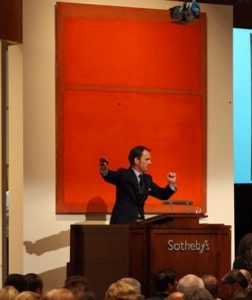 Hoffman v. L&M Arts arose from the sale of a 1961 Rothko painting (right) by Sotheby’s in 2010; a previous owner alleged that this sale revealed facts about her own sale, in violation of a confidentiality provision in the sales contract that said: “All parties agree to make maximum efforts to keep all aspects of this transaction confidential indefinitely.” The Fifth Circuit ruled for the defense in all respects, concluding that:
Hoffman v. L&M Arts arose from the sale of a 1961 Rothko painting (right) by Sotheby’s in 2010; a previous owner alleged that this sale revealed facts about her own sale, in violation of a confidentiality provision in the sales contract that said: “All parties agree to make maximum efforts to keep all aspects of this transaction confidential indefinitely.” The Fifth Circuit ruled for the defense in all respects, concluding that:
- The original owner did not state a fraud claim against the relevant gallery, based on its alleged misrepresentation of its authority to act on behalf of an unnamed buyer, or its alleged misrepresentation about representing an entity or individual. (Notably, the owner did not argue in the district court that equitable relief could still be appropriate without proof of damage), or its claim that the piece would “disappear” into its client’s private collection.
- The contract did not require secrecy about the fact of the sale, based on the plain meaning of the term “aspect,” other provisions in the agreement, and the Texas policy against restraints on alienability.
- The questions about damages associated with the alleged breach either reflected speculative bargains, incorrect damages measures, or a disgorgement theory that is not well-supported as a Texas contract remedy.
No. 15-10046 (Sept. 28, 2016).
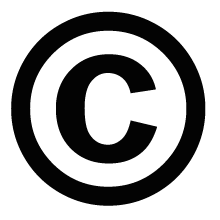 The plaintiff in GlobeRanger Corp. v. Software AG won a $15 million judgment for misappropriation of trade secrets. The Fifth Circuit affirmed, holding:
The plaintiff in GlobeRanger Corp. v. Software AG won a $15 million judgment for misappropriation of trade secrets. The Fifth Circuit affirmed, holding:
- After a thorough review of Circuit precedent – not all entirely consistent – “that GlobeRanger’s trade secret misappropriation claim requires establishing an additional element than what is required to make out a copyright violation: that the protected information was taken via improper means or breach of a confidential relationship. Because the state tort provides substantially different protection than copyright law, it is not preempted.”
- Recognizing the “jurisdictional Catch-22” created by that ruling, and referring back to an earlier panel opinion from the time of the case’s removal: “As the complaint [then] alleged only conversion of intangible property for which there is equivalency between the rights protected under that state tort and federal copyright law, complete preemption converted the conversion claim into one brought under the Copyright Act that supported federal question jurisdiction at the time of removal and supplemental jurisdiction after it was dismissed.”
- Found that GlobeRanger had offered sufficient evidence of: (1) what specifically constituted its claimed trade secrets; (2) whether Software AG acquired trade secrets improperly or with notice of impropriety, particularly in light of federal contracting regulations; and (3) whether Software AG “used” any trade secret.
The opinion concluded with an unfortunately apt observation about the business litigation that is the focus of this blog: “This case demonstrates the unfortunate complexity of much of modern civil litigation. A trial involving a single cause of action—misappropriation of trade secrets (plus a derivate conspiracy claim)—has resulted in an appeal raising numerous issues that span the lifecycle of the lawsuit: jurisdiction; preemption; federal contracting regulations; expert testimony on damages; and jury instructions.
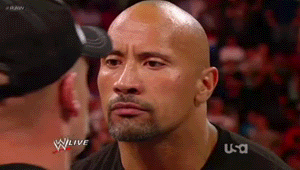 Extensive tornado damage to a building at the University of Southern Mississippi led to a hard-fought dispute among insurers. The Fifth Circuit’s detailed affirmance of the district court’s opinion turned on this observation about the losing insurer’s postition: “Were this construction adopted, insurers who covered the same risk would be incentivized to enter into a stare-down, each waiting for the other to blink first in order to seize the opportunity to deny coverage. Such an outcome is neither reasonable nor commercially practicable.” Southern Ins. Co. v. Affiliate
Extensive tornado damage to a building at the University of Southern Mississippi led to a hard-fought dispute among insurers. The Fifth Circuit’s detailed affirmance of the district court’s opinion turned on this observation about the losing insurer’s postition: “Were this construction adopted, insurers who covered the same risk would be incentivized to enter into a stare-down, each waiting for the other to blink first in order to seize the opportunity to deny coverage. Such an outcome is neither reasonable nor commercially practicable.” Southern Ins. Co. v. Affiliate d FM Ins. Co., No. 15060742 (July 21, 2016). (The opinion also features a rare appellate shout-out to T.S. Eliot’s The Hollow Men.)
d FM Ins. Co., No. 15060742 (July 21, 2016). (The opinion also features a rare appellate shout-out to T.S. Eliot’s The Hollow Men.)
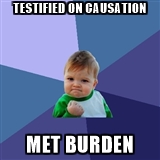 In the trial of a dispute about the handling of another lawsuit, the plaintiffs’ lawyer in that other suit testified that he would not have settled for less than $3 million. On appeal, two expert reports were cited in opposition to that testimony, and the Fifth Circuit rejected them. It noted that the trial court was within its rights to credit the lawyer’s testimony, and that the reports had been prepared pretrial and thus could not have addressed that testimony. RSUI Indemnity Co. v. American States Ins. Co., No. 15-30976 (July 8, 2016, unpublished).
In the trial of a dispute about the handling of another lawsuit, the plaintiffs’ lawyer in that other suit testified that he would not have settled for less than $3 million. On appeal, two expert reports were cited in opposition to that testimony, and the Fifth Circuit rejected them. It noted that the trial court was within its rights to credit the lawyer’s testimony, and that the reports had been prepared pretrial and thus could not have addressed that testimony. RSUI Indemnity Co. v. American States Ins. Co., No. 15-30976 (July 8, 2016, unpublished).
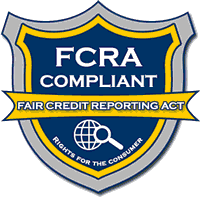 Bacharach, upset by the handling of credit reporting by SunTrust, sued it under the FCRA. The Fifth Circuit affirmed summary judgment for SunTrust, noting:
Bacharach, upset by the handling of credit reporting by SunTrust, sued it under the FCRA. The Fifth Circuit affirmed summary judgment for SunTrust, noting:
- Reporting about a failed “flip” of commercial property — especially when the alleged losses involved lost rental income — did not fall within the scope of the FCRA;
- Evidence of other, unrelated payment problems during the relevant period negated the element of causation; and
- “Vague and conclusory deposition testimony” does not establish actionable emotional distress under the FCRA.
Bacharah v. Suntrust Mortgage, No. 15-31009 (June 30, 2016).
 To acquire rights to use patented check processing technology, Chase paid for a license which contained a “Most Favored Licensee” clause. The licensor granted a similar license to another entity for what Chase contended was a significantly lower royalty. Chase sued and won judgment for roughly $70 million. The Fifth Circuit affirmed, agreeing with Chase’s characterization of the royalty as “paid-up lump sum” rather than “running,” and thus concluding that the MFL clause could apply retroactively and require a refund. A dissent saw the clause as only applying prospectively. The opinions identify a number of practical problems that can arise in drafting sophisticated royalty agreements about intellectual property. JP Morgan Chase Bank NA v. Dixon, No. 15-40905 (May 19, 2016).
To acquire rights to use patented check processing technology, Chase paid for a license which contained a “Most Favored Licensee” clause. The licensor granted a similar license to another entity for what Chase contended was a significantly lower royalty. Chase sued and won judgment for roughly $70 million. The Fifth Circuit affirmed, agreeing with Chase’s characterization of the royalty as “paid-up lump sum” rather than “running,” and thus concluding that the MFL clause could apply retroactively and require a refund. A dissent saw the clause as only applying prospectively. The opinions identify a number of practical problems that can arise in drafting sophisticated royalty agreements about intellectual property. JP Morgan Chase Bank NA v. Dixon, No. 15-40905 (May 19, 2016).
 In a significant and technical dispute about Clean Air Act liability related to emissions at Exxon’s complex in Baytown Texas, the Fifth Circuit touched on a matter of broader interest about restitution/calculation of “benefit.” In its analysis of a proper civil penalty, the Court noted that “the effect of spending money to achieve compliance is often not mitigation of economic benefit — rather, plaintiffs may point to such expenditures as evidence of the regulated entity’s economic benefit to the extent the delay in making those expenditures allowed the regulated entity to use the money it saved productively.” Environment Texas Citizens Lobby v. ExxonMobil Corp., No. 15-20030 (May 27, 2016).
In a significant and technical dispute about Clean Air Act liability related to emissions at Exxon’s complex in Baytown Texas, the Fifth Circuit touched on a matter of broader interest about restitution/calculation of “benefit.” In its analysis of a proper civil penalty, the Court noted that “the effect of spending money to achieve compliance is often not mitigation of economic benefit — rather, plaintiffs may point to such expenditures as evidence of the regulated entity’s economic benefit to the extent the delay in making those expenditures allowed the regulated entity to use the money it saved productively.” Environment Texas Citizens Lobby v. ExxonMobil Corp., No. 15-20030 (May 27, 2016).
 In Carpenter Properties Inc. v. JP Morgan Chase Bank, the Fifth Circuit found that a contract had been modified notwithstanding a signature on a formal counteroffer, but then found no liability under a “corporate veil” theory as to Chase: “[M]ere frustration with Chase for its failure to pay a commission once Chase’s identity was known is insufficient to amount to frustration of contractual expectations regarding the party to whom Carpenter looked for performance . . . .” No. 15-60309 (May 4, 2016, unpublished).
In Carpenter Properties Inc. v. JP Morgan Chase Bank, the Fifth Circuit found that a contract had been modified notwithstanding a signature on a formal counteroffer, but then found no liability under a “corporate veil” theory as to Chase: “[M]ere frustration with Chase for its failure to pay a commission once Chase’s identity was known is insufficient to amount to frustration of contractual expectations regarding the party to whom Carpenter looked for performance . . . .” No. 15-60309 (May 4, 2016, unpublished).
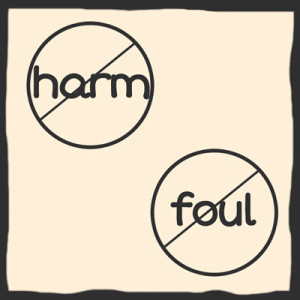 The plaintiffs in Wendt v. 24 Hour Fitness USA, Inc. complained about several violations of the Texas Health Spa Act in the form membership contract of 24 Hour Fitness. Noting the specific remedies provided by that Act, the Fifth Circuit held: “We agree with the district court that Plaintiffs suffered no injury-in-fact. 24 Hour’s alleged violations of the Act did not harm Plaintiffs in any way. To the contrary, 24 Hour gave Plaintiffs exactly what they paid for: access to a gym. Plaintiffs therefore lack Article III standing, and the district court
The plaintiffs in Wendt v. 24 Hour Fitness USA, Inc. complained about several violations of the Texas Health Spa Act in the form membership contract of 24 Hour Fitness. Noting the specific remedies provided by that Act, the Fifth Circuit held: “We agree with the district court that Plaintiffs suffered no injury-in-fact. 24 Hour’s alleged violations of the Act did not harm Plaintiffs in any way. To the contrary, 24 Hour gave Plaintiffs exactly what they paid for: access to a gym. Plaintiffs therefore lack Article III standing, and the district court
properly dismissed the case.” No. 15-10309 (April 13, 2016).
 JAB Energy successfully sued Cashman Equipment and Cashman’s subsidiary, Servicio Marina Superior (“SMS”), establishing at trial that poor performance by the ocean tug “Atlas” led to roughly $5 million in damages. The Fifth Circuit reversed an “alter ego” finding against Cashman, noting the absence of a fraud allegation against either defendant, and observing that JAB could have negotiated for the same warranty protections from Cashman as from SMS. It affirmed on the merits as to SMS, detailing the well-kept records by the plaintiff about how poorly Atlas tugged, especially as to engine performance and fuel consumption. JAB Energy Solutions v. Servicio Marina Superior, No. 15-30504 (Feb. 26, 2016, unpublished).
JAB Energy successfully sued Cashman Equipment and Cashman’s subsidiary, Servicio Marina Superior (“SMS”), establishing at trial that poor performance by the ocean tug “Atlas” led to roughly $5 million in damages. The Fifth Circuit reversed an “alter ego” finding against Cashman, noting the absence of a fraud allegation against either defendant, and observing that JAB could have negotiated for the same warranty protections from Cashman as from SMS. It affirmed on the merits as to SMS, detailing the well-kept records by the plaintiff about how poorly Atlas tugged, especially as to engine performance and fuel consumption. JAB Energy Solutions v. Servicio Marina Superior, No. 15-30504 (Feb. 26, 2016, unpublished).
 Diversity jurisdiction brings unusual claims to the federal courts, none more so than E.C. v. Saraco, in which a girl sued for injuries caused when the neighbors’ poodle attacked her. The poodle owners won summary judgment, and the Fifth Circuit affirmed. The legal issue was the foreseeability of violence by the poodle — whether it was known to have a “vicious and dangerous disposition.” The Court concluded that no fact issue was raised by evidence of (1) the poodle’s tendency to jump when excited, (2) the poodle’s allegedly tender ears, and (3) the girl’s unfamiliarity with the proper way to pet the poodle. No. 15-60434 (Jan. 4, 2016, unpublished). (The above poodle art was drawn by the great Banksy.)
Diversity jurisdiction brings unusual claims to the federal courts, none more so than E.C. v. Saraco, in which a girl sued for injuries caused when the neighbors’ poodle attacked her. The poodle owners won summary judgment, and the Fifth Circuit affirmed. The legal issue was the foreseeability of violence by the poodle — whether it was known to have a “vicious and dangerous disposition.” The Court concluded that no fact issue was raised by evidence of (1) the poodle’s tendency to jump when excited, (2) the poodle’s allegedly tender ears, and (3) the girl’s unfamiliarity with the proper way to pet the poodle. No. 15-60434 (Jan. 4, 2016, unpublished). (The above poodle art was drawn by the great Banksy.)
 Judgment creditors garnished two oil tankers (including the M/V FMPC 30, right); the garnishees appealed as to the connection between them and the judgment debtors. After reviewing the distinction between “alter ego” theories at the jurisdictional and merits stages, the Fifth Circuit reversed. Finding that “[t]he [district court relied almost exclusively on two ‘organizational charts’ submitted by Plaintiffs (taken from Garnishees’ website),” the Court found that the charts “do not actually depict corporate structure” or ” show the functional relationship among the entities.” Accordingly, the case for “jurisdictional veil piercing” was not established and the garnishment proceeding was dismissed. Licea v. Curacao Drydock Co., No. 14-20619 (Nov. 23, 2015).
Judgment creditors garnished two oil tankers (including the M/V FMPC 30, right); the garnishees appealed as to the connection between them and the judgment debtors. After reviewing the distinction between “alter ego” theories at the jurisdictional and merits stages, the Fifth Circuit reversed. Finding that “[t]he [district court relied almost exclusively on two ‘organizational charts’ submitted by Plaintiffs (taken from Garnishees’ website),” the Court found that the charts “do not actually depict corporate structure” or ” show the functional relationship among the entities.” Accordingly, the case for “jurisdictional veil piercing” was not established and the garnishment proceeding was dismissed. Licea v. Curacao Drydock Co., No. 14-20619 (Nov. 23, 2015).
 After 15-plus years of litigation, the remaining issues in Art Midwest Inc. v. Clapper related to the calculation of prejudgment interest. No. 14-10973 (Nov. 9, 2015, last before the Fifth Circuit in Art Midwest Inc. v. Atl. Ltd. P’ship XII, 742 F.3d 206 (5th Cir. 2014)). The Court reversed as to the starting date for calculating interest — even though the first judgment by the district court was reversed in part, the date of that judgment was still the proper starting point under Fed. R. App. P. 37(a) and Masinter v. Tenneco Oil Co., 929 F.2d 191 (5th Cir. 1991), aff’d in relevant part, 938 F.2d 536 (5th Cir. 1991). The opinion also touches on waiver and law-of-the-case issues addressed in the 2014 appeal.
After 15-plus years of litigation, the remaining issues in Art Midwest Inc. v. Clapper related to the calculation of prejudgment interest. No. 14-10973 (Nov. 9, 2015, last before the Fifth Circuit in Art Midwest Inc. v. Atl. Ltd. P’ship XII, 742 F.3d 206 (5th Cir. 2014)). The Court reversed as to the starting date for calculating interest — even though the first judgment by the district court was reversed in part, the date of that judgment was still the proper starting point under Fed. R. App. P. 37(a) and Masinter v. Tenneco Oil Co., 929 F.2d 191 (5th Cir. 1991), aff’d in relevant part, 938 F.2d 536 (5th Cir. 1991). The opinion also touches on waiver and law-of-the-case issues addressed in the 2014 appeal.
T reaty Energy sued for its damages after an involuntary bankruptcy petition against it was dismissed. One of its claims sought damages for losses in connection with attempts to sell its restricted stock during that period. The Fifth Circuit affirmed summary judgment for the defendants, noting: (1) “Though the sales price of restricted shares did fluctuate, it averaged 0.5¢ immediately before, during, and after the pendency of the involuntary petition, and (2) the affiant about an alleged plan to sell restricted shares at a substantial discount lacked personal knowledge, claiming only that he “did assist in the process when requested, which included gathering information when given direct instructions by his superiors.” Treaty Energy Corp. v. Hallin, No. 15-30113 (Oct. 27, 2015, unpublished).
reaty Energy sued for its damages after an involuntary bankruptcy petition against it was dismissed. One of its claims sought damages for losses in connection with attempts to sell its restricted stock during that period. The Fifth Circuit affirmed summary judgment for the defendants, noting: (1) “Though the sales price of restricted shares did fluctuate, it averaged 0.5¢ immediately before, during, and after the pendency of the involuntary petition, and (2) the affiant about an alleged plan to sell restricted shares at a substantial discount lacked personal knowledge, claiming only that he “did assist in the process when requested, which included gathering information when given direct instructions by his superiors.” Treaty Energy Corp. v. Hallin, No. 15-30113 (Oct. 27, 2015, unpublished).
 Hilda Garza sued Starr County for wrongfully discharging her as a county attorney, in retaliation for announcing her candidacy for the local school board, and she won a $1.4 million verdict for front pay at trial. The district court set aside the verdict as advisory, reasoning that it went to an issue of equitable relief, and allowed the County to offer her reinstatement as an alternative remedy. The Fifth Circuit reversed. While Fed. R. Civ. P. 39(c) allows an advisory jury, it does not apply when: (1) the parties voluntarily submit an issue to a jury without formal objection, and (2) the district court does not announce in advance that the verdict is advisory. Garza v. Starr County, Texas, No. 14-41343 (Oct. 20, 2015, unpublished) (citing, inter alia, Alcatel USA, Inc. v. DGI Techs., Inc., 166 F.3d 772 (5th Cir. 1999)). (The County also challenged the award as excessive; while noting that the “more prudent course” would have been for the County to cross-appeal, the Court allowed the County to raise that issue on remand — although noting that the County’s lack of earlier objections would limit what it could raise.)
Hilda Garza sued Starr County for wrongfully discharging her as a county attorney, in retaliation for announcing her candidacy for the local school board, and she won a $1.4 million verdict for front pay at trial. The district court set aside the verdict as advisory, reasoning that it went to an issue of equitable relief, and allowed the County to offer her reinstatement as an alternative remedy. The Fifth Circuit reversed. While Fed. R. Civ. P. 39(c) allows an advisory jury, it does not apply when: (1) the parties voluntarily submit an issue to a jury without formal objection, and (2) the district court does not announce in advance that the verdict is advisory. Garza v. Starr County, Texas, No. 14-41343 (Oct. 20, 2015, unpublished) (citing, inter alia, Alcatel USA, Inc. v. DGI Techs., Inc., 166 F.3d 772 (5th Cir. 1999)). (The County also challenged the award as excessive; while noting that the “more prudent course” would have been for the County to cross-appeal, the Court allowed the County to raise that issue on remand — although noting that the County’s lack of earlier objections would limit what it could raise.)
 Allstate sued a group of chiropractic clinics and law firms under RICO, alleging that they conspired to send them fraudulent bills for unnecessary services. Allstate won a 7-figure judgment at trial. The Fifth Circuit affirmed, reviewing some basic RICO principles after recent Supreme Court rulings:
Allstate sued a group of chiropractic clinics and law firms under RICO, alleging that they conspired to send them fraudulent bills for unnecessary services. Allstate won a 7-figure judgment at trial. The Fifth Circuit affirmed, reviewing some basic RICO principles after recent Supreme Court rulings:
- “Although the evidence proving the two will sometimes coalesce, the government still has to satisfy the organizational metric of the enterprise (including continuity and common purpose) and the statutorily enumerated predicated offenses. There is thus no impermissible collapsing of the distinction between the enterprise and the pattern of racketeering.” (applying a plain error standard of review)
- “[M]ail fraud and its place in RICO framework are different from a case alleging common-law fraud, and one of the differences is the lack of a reliance requirement.” Here, “[r]egardless of how proximate cause is sliced, Allstate proved it. There is no plausible argument that the insurers were unforeseeable victims or otherwise wronged by the caprice of chance.”
- As to damages, distinguishing a similar case that found inadequate proof that all paid-for services were unnecessary, the Court held: “There is no such deficiency here. The court instructed the jury, in awarding damages, to distinguish between the portions of the bills generated for unreasonable or unnecessary services and those not generated for those services. Allstate had experts examine all of the files, not just a representative sample, and one of those witnesses testified that Allstate had internally itemized the elements of each settlement.”
Allstate Ins. Co. v. Plambeck, No. 14-10574 (Sept. 17, 2015).
 In the wake of the Deepwater Horizon accident, plaintiffs sought to bring two class actions against BP alleging violations of federal securities law — one regarding BP’s representations about its pre-spill safety procedures, and one about BP’s post-accident statements as to the flow rate of oil after the spill occurred. The district court certified the post-spill class, concluding that the plaintiffs had established a model of damages consistent with their liability case and capable of measurement across the class, and refused to certify the pre-spill class, finding that it had not satisfied the “common damages” burden established by the Supreme Court in Comcast Corp. v. Behrend, 133 S. Ct. 1426 (2013). The Fifth Circuit affirmed. As to the post-spill class, the Court reviewed BP’s criticisms of the plaintiffs’ damages expert, and found that they were not so potent as to invalidate his theory at the class certification stage. As to the pre-spill class, however, the Court agreed that the expert failed to exclude class members who would have bought the stock even with full knowledge of the alleged risks, making his analysis infirm for certification purposes. Ludlow v. BP, PLC, No. 14-20420 (revised Sept.15, 2015).
In the wake of the Deepwater Horizon accident, plaintiffs sought to bring two class actions against BP alleging violations of federal securities law — one regarding BP’s representations about its pre-spill safety procedures, and one about BP’s post-accident statements as to the flow rate of oil after the spill occurred. The district court certified the post-spill class, concluding that the plaintiffs had established a model of damages consistent with their liability case and capable of measurement across the class, and refused to certify the pre-spill class, finding that it had not satisfied the “common damages” burden established by the Supreme Court in Comcast Corp. v. Behrend, 133 S. Ct. 1426 (2013). The Fifth Circuit affirmed. As to the post-spill class, the Court reviewed BP’s criticisms of the plaintiffs’ damages expert, and found that they were not so potent as to invalidate his theory at the class certification stage. As to the pre-spill class, however, the Court agreed that the expert failed to exclude class members who would have bought the stock even with full knowledge of the alleged risks, making his analysis infirm for certification purposes. Ludlow v. BP, PLC, No. 14-20420 (revised Sept.15, 2015).
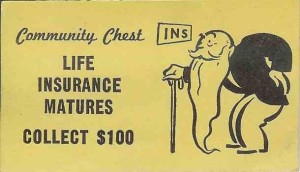 Bartos, an injured seaman, sued for future lost wages. His expert offered calculations based on a retirement age of 55.8 (from a table of work-life expectancies) or 67 (the Social Security full-retirement age). The Fifth Circuit reversed a damages award based on the older age and rendered an award based on the younger one, reasoning: “Barto’s economist did not provide any reason to
Bartos, an injured seaman, sued for future lost wages. His expert offered calculations based on a retirement age of 55.8 (from a table of work-life expectancies) or 67 (the Social Security full-retirement age). The Fifth Circuit reversed a damages award based on the older age and rendered an award based on the younger one, reasoning: “Barto’s economist did not provide any reason to  believe that Barto would continue to work past his statistical work-life expectancy. The only relevant evidence Barto presented at trial was his testimony that he plans to work ‘[a]s long as I can retire. Whatever the retirement age is.’ This scant evidence was not enough to show that Barto ‘by virtue of his health or occupation or other factors, is likely to live and work a longer, or shorter, period than the average.'” Barto v. Shore Construction LLC, No. 14-31326 (revised Sept. 29, 2015).
believe that Barto would continue to work past his statistical work-life expectancy. The only relevant evidence Barto presented at trial was his testimony that he plans to work ‘[a]s long as I can retire. Whatever the retirement age is.’ This scant evidence was not enough to show that Barto ‘by virtue of his health or occupation or other factors, is likely to live and work a longer, or shorter, period than the average.'” Barto v. Shore Construction LLC, No. 14-31326 (revised Sept. 29, 2015).
The plaintiff in International Marine LLC v. FDT proved 33 breaches of the noncompete provisions of a contract related to the chartering of tugboats. The district court and Fifth Circuit agreed that a liquidated damages clause applied to the last several breaches. As to the first five, however, the Court reasoned that the clause “would impose an unreasonable penalty, because due to the parties’ conduct, we know the extent of damages [Plaintiff] suffered from each of these breaches.” It noted: “For over a century, courts have refused to award liquidated damages for contractual breaches solely involving default on payment obligations.” No. 14-31192 (Aug. 10, 2015, unpublished).
Johnny Long, a former bankruptcy debtor, sought to bring FCA claims against his former employer. The defendant successfully obtained dismissal on the ground of judicial estoppel because the claim was not listed on Long’s bankruptcy schedules. After reminding that judicial estoppel, as a flexible and equitable doctrine, does not automatically compel dismissal in such a situation, the Fifth Circuit affirmed. The elements are that “(1) the party against whom judicial estoppel is sought has asserted a legal position which is plainly inconsistent with a prior position, (2) a court accepted the prior position, and (3) the party did not act inadvertently.” The specific issue was the third element, and whether Long had a motivation to conceal. The Court noted three advantageous features the payment terms in Long’s Chapter 13 plan, which disclosure could have endangered — and further noted that after judicial estoppel was raised, Long sought to reopen his case so “he may pay interest to his creditors” if he recovered on his FCA claim. United States ex rel Long v. GSD&M Idea City, LLC, 798 F.3d 265 (5th Cir. 2015). A later award to the defendant of roughly $200,000 in costs was substantially affirmed in United States ex rel Long v. GSDMidea City, LLC, No. 14-11049 (Dec. 1, 2015).
 A contract dispute about the management of several vessels (among them, the M/V Maurader, right) led to a holding that a termination fee was void as a penalty. The contract required the boat owner to pay the management company “fifty percent of what [it] would have earned as a Management Fee had [the] Agreement not been so terminated,” and provided a formula for making that calculation, which in this case was $537,246.86. “The termination fee formula, however, makes no deductions to account for the fact that [management company] would have fewer expenses in the event of termination, and [it] has not quantified the expenses that would remain.” Comar Marine Co. v. Raider Marine Logistics LLC, No. 13-30156 (July 6, 2015).
A contract dispute about the management of several vessels (among them, the M/V Maurader, right) led to a holding that a termination fee was void as a penalty. The contract required the boat owner to pay the management company “fifty percent of what [it] would have earned as a Management Fee had [the] Agreement not been so terminated,” and provided a formula for making that calculation, which in this case was $537,246.86. “The termination fee formula, however, makes no deductions to account for the fact that [management company] would have fewer expenses in the event of termination, and [it] has not quantified the expenses that would remain.” Comar Marine Co. v. Raider Marine Logistics LLC, No. 13-30156 (July 6, 2015).
A set of “kaleidoscopic claims” about the Houston ISD’s contracting process produced several RICO holdings of note in Ramirez Group v. Houston ISD, No. 13-20753 (May 18, 2015):
- To show the requisite injury, “[a] plaintiff need not show that the other party would have been obliged to confer a benefit, only that the other party would have conferred the benefit.” This can be shown by a substantial drop in work assignments coupled with other suspicious activity.
- The Houston ISD is immune from suit under RICO, because a governmental entity cannot form the requisite criminal intent, and because municipal entities enjoy common law immunity from punitive damages.
- Official immunity does not extend to a school trustee accused of acting “wholly outside the legitimate scope” of his duties by allegedly accepting bribes.
- The requisite mental state for tortious interference can be shown “[w]here only a limited number of . . . contractors would be selected, [so] all of the participants in the scheme ‘knew the interference was substantially certain to occur as a result of the conduct.'”
On rehearing, the Fifth Circuit vacated its earlier panel opinion in Wooten v. McDonald Transit Associates, 775 F.3d 689 (5th Cir. 2015), which reversed a default judgment because of inadequate underlying pleadings, and replaced it with an opinion affirming the default judgment. The new opinion holds that “[a]lthough Wooten’s complaint contained very few factual allegations, we conclude that it met the low threshold of content demanded by Federal Rule of Civil Procedure 8 because it provided McDonald Transit with fair notice of Wooten’s claims.” No. 13-11035 (June 10, 2015). The Court thus continues to reserve the question left open in Nishimatsu Construction Co. v. Houston Nat’l Bank, 515 F.2d 1200 (5th Cir. 1975): “We do not consider here the possibility that otherwise fatal defects in the pleadings might be corrected by proof taken by the court at a hearing.”
A business dispute about a telephone service provider’s billing system leads to 2 holdings of broad interest, one procedural and the other substantive:
1A. Waiver. “Although [defendant] moved for a directed verdict at the close of evidence, it did not argue in its motion that the Supply Contract was unenforceable.” Accordingly, under Fed. R. Civ. 50(b), that argument could not be raised post-trial. (Here, in fact, because defendant took the opposite position about the contract in the directed verdict motion, judicial estoppel also barred the later argument.)
1B. Waiver of Waiver. When defendant relied on a certain letter agreement in its Rule 50(b) motion, and plaintiff “did not argue waiver in its response . . . [plaintiff] has forfeited its right to raise the waiver issue on appeal.”
2. Speculative damages. A “strained business relationship” between the parties supported a holding that plaintiff’s $10 million lost profits award, assuming six years of business dealings, was not proven with “reasonable certainty.” Transverse LLC v. Iowa Wireless Services, LLC, No. 13-51098 (revised Aug. 5, 2015, unpublished).
During the 1980s, the Jefferson Group failed to pay both a large loan and its property taxes. The lender failed and the RTC/FDIC acquired the deed of trust for the loan, which it later assigned to another entity. The local school district foreclosed on the property in 1990. Many years later, a dispute arose between the entity who acquired the deed of trust, who asserted a lien on the (now-developed) land, and the owners who traced title to the foreclosure sale. The district court dismissed on limitations grounds. The Fifth Circuit concluded that if the RTC had not effectively consented to the foreclosure sale, then it violated 12 U.S.C. § 1825(b)(2), which meant that the sale “is, without qualification, ‘null and void.'” This would mean that the current owners could not assert a limitations defense. The Court remanded to consider whether a violation had occurred, in light of this conclusion about the effect of a violation. CAP Holdings, Inc. v. Lorden, No. 14-50397 (June 22, 2015).
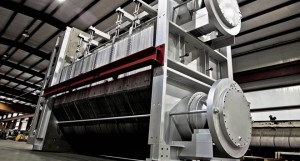 Pal-Con, a manufacturer of “regenerators” for gas turbine engines (right), sued a pilot car service for causing a truck wreck that severely damaged one of its products. The service argued that the economic loss rule precluded Pal-Con’s claim. The Fifth Circuit disagreed, citing Chapman Custom Homes, Inc. v. Dallas Plumbing Co., 445 S.W.3d 716, 718 (Tex. 2014). “Here, a manufacturer contracted with a shipper, who subcontracted with a trucking company, who subcontracted with a negligent pilot car service provider . . . [T]he harm suffered by Pal-Con extended beyond the mere economic loss of a contractual benefit from [pilot car service] with [trucking company.]” Pal-Con, Ltd. v. Wheeler, No. 14-10615 (June 22, 2015, unpublished).
Pal-Con, a manufacturer of “regenerators” for gas turbine engines (right), sued a pilot car service for causing a truck wreck that severely damaged one of its products. The service argued that the economic loss rule precluded Pal-Con’s claim. The Fifth Circuit disagreed, citing Chapman Custom Homes, Inc. v. Dallas Plumbing Co., 445 S.W.3d 716, 718 (Tex. 2014). “Here, a manufacturer contracted with a shipper, who subcontracted with a trucking company, who subcontracted with a negligent pilot car service provider . . . [T]he harm suffered by Pal-Con extended beyond the mere economic loss of a contractual benefit from [pilot car service] with [trucking company.]” Pal-Con, Ltd. v. Wheeler, No. 14-10615 (June 22, 2015, unpublished).
Disputes between borrowers and mortgage servicers are common; jury trials in those disputes are rare. But rare events do occur, and in McCaig v. Wells Fargo Bank, 788 F.3d 463 (5th Cir. 2015), a servicer lost a judgment for roughly $400,000 after a jury trial.
The underlying relationship was defined by a settlement agreement in which “Wells Fargo has agreed to accept payments from the McCaigs and to give the McCaigs the opportunity to avoid foreclosure of the Property; as long as the McCaigs make the required payments consistent with the Forbearance Agreement and the Loan Agreement.” Unfortunately, Wells’s “‘computer software was not equipped to handle’ the settlement and forbearance agreements meaning ‘manual tracking’ was required.” This led to a number of accounting mistakes, which in turn led to unjustified threats to foreclose and other miscommunications.
In reviewing and largely affirming the judgment, the Fifth Circuit reached several conclusions of broad general interest:
- The “bona fide error” defense under the Texas Debt Collection Act allows a servicer to argue that it made a good-faith mistake; Wells did not plead that defense here, meaning that its arguments about a lack of intent were not pertinent to the elements of the Act sued upon by plaintiffs;
- The economic loss rule did not bar the TDCA claims, even though the alleged misconduct breached the parties’ contract: “[I]f a particular duty is defined both in a contract and in a statutory provision, and a party violates the duty enumerated in both sources, the economic loss rule does not apply”;
- A Casteel – type charge issue is not preserved if the objecting party submits the allegedly erroneous question with the comment “If I had to draft this over again, that’s the way I’d draft it”;
- The plaintiffs’ lay testimony was sufficient to support awards for mental anguish; and
- “[A] print-out from [plaintiffs’] attorney’s case management system showing individual tasks performed by the attorney and the date on which those tasks were performed” was sufficient evidence to support the award of attorneys fees.
A dissent took issue with the economic loss holding, and would find all of the plaintiffs’ claims barred; “[t]he majority’s reading of these [TDCA] provisions specifically equates mere contract breach with statutory violations[.]”
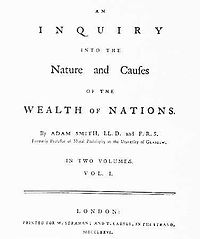 Defendants claimed that a foreclosure sale produced an unfair windfall for Fannie Mae on a substantial commercial property. They alleged that Fannie Mae had a practice of making unfairly low bids on Gulf Coast properties. The Fifth Circuit observed: “As the district court held, evidence regarding Fannie Mae’s other foreclosure practices throughout the Gulf Coast region would not impact whether the subject property was sold for the amount at which it would have changed hands between a willing buyer and seller having knowledge of the relevant facts. At most, such evidence might have suggested that Fannie Mae’s conduct throughout the region affected the fair market value of the subject property. So long as the property was sold for fair market value, however, evidence of the various market forces influencing that value is not relevant to this case.” Fannie Mae v. Lynch, No. 14-60864 (June 2, 2015, unpublished).
Defendants claimed that a foreclosure sale produced an unfair windfall for Fannie Mae on a substantial commercial property. They alleged that Fannie Mae had a practice of making unfairly low bids on Gulf Coast properties. The Fifth Circuit observed: “As the district court held, evidence regarding Fannie Mae’s other foreclosure practices throughout the Gulf Coast region would not impact whether the subject property was sold for the amount at which it would have changed hands between a willing buyer and seller having knowledge of the relevant facts. At most, such evidence might have suggested that Fannie Mae’s conduct throughout the region affected the fair market value of the subject property. So long as the property was sold for fair market value, however, evidence of the various market forces influencing that value is not relevant to this case.” Fannie Mae v. Lynch, No. 14-60864 (June 2, 2015, unpublished).
 Constango Operators Inc. built a pipeline beneath the Atchafalaya Channel. Unfortunately, the Corps of Engineers neglected to forward information about that new pipeline to its Waterways Division, which supervises dredging operations. A dredging barge operated by Weeks Marine (the G.D. MORGAN, right) then hit the pipeline. The resulting trial awarded damages to Constango, with the U.S. liable for 60% and Weeks 40%, and the Fifth Circuit affirmed.
Constango Operators Inc. built a pipeline beneath the Atchafalaya Channel. Unfortunately, the Corps of Engineers neglected to forward information about that new pipeline to its Waterways Division, which supervises dredging operations. A dredging barge operated by Weeks Marine (the G.D. MORGAN, right) then hit the pipeline. The resulting trial awarded damages to Constango, with the U.S. liable for 60% and Weeks 40%, and the Fifth Circuit affirmed.
The opinion turns largely on issues or maritime law and the applicable federal regulations, but has three features of broad general interest:
- An exceptionally clear definition of “extrinsic evidence” as “anything outside a contract itself,” which excluded consideration of material from the Federal Register and CFR in construing an exculpatory clause;
- A reminder that a duty of care can arise from common law even though regulations control and define some aspects of the parties’ dealings; and
- A reminder, under general tort law, that “[t]he fact that Weeks followed the custom of the dredging industry is not dispositive, because a common practice can still be negligent.”
Contango Operators, Inc. v. USA, No. 14-20265 (May 28, 2015, unpublished).
Lincoln Insurance sued several defendants, who it accused of charging excessive fees and otherwise engaging in self-dealing to the detriment of Lincoln. Lincoln won a $16.5 million judgment against two of them for tortious interference. In a “grab bag” of holdings after both sides appealed, the Fifth Circuit held:
- It did not need to reach a difficult Erie issue about when a tortious interference claim accrues under Texas law, where some of the conduct occurs outside the limitations period, because the trial court found sufficient facts to establish that the discovery rule applied;
- Voluntary dismissal of a claim in amended pleading, in response to a dismissal order “based on a technical defect or withdrawal,” waives the right to appeal that order;
- The economic loss rule barred conversion claims where contract provisions dealt with the underlying rights and responsibilities; and
- When a contract provision expressly created a fiduciary duty as to the handling of funds in a particular account, that duty necessarily extended that duty to the handling of those funds before their deposit (and the trial court erred in holding otherwise, requiring a remand).
The Court noted: “[A] litigation strategy with a narrower focus on certain claims and Defendants might reduce the complications, both procedural and substantive, that arose the first go-around.” Lincoln General Ins. Co. v. U.S. Auto Ins. Servcs., Inc., No. 13-10589 (May 18, 2015).
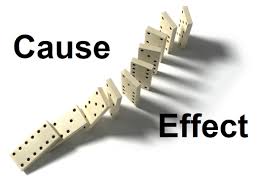 A medical practice hired an employment agency, which recommended an office manager who then embezzled $60,000. The practice sued the agency and lost. The Fifth Circuit observed that under the Texas definition of a “producing cause”:
A medical practice hired an employment agency, which recommended an office manager who then embezzled $60,000. The practice sued the agency and lost. The Fifth Circuit observed that under the Texas definition of a “producing cause”:
- “when boys meet a man because he volunteers with their Boys Club, but the boys and their family then befriend the man outside of the club context, the club’s misrepresentation that it thoroughly checks the background of its volunteers is not a producing cause of the man’s later molestation of the boys outside of the club,” and
- “when a church advertises a teenage boy as a babysitter and parents hire him, the
church’s advertisement is not the producing cause of his later molestation of
their children because the parents themselves chose to hire the teenager as a
babysitter.”
Accordingly, “[b]ecause the doctors of the Medical Group decided to hire Brown based upon their own observations, we conclude that [the agency’s] conduct was not the producing cause of the Medical Group hiring Brown and its resulting injuries.” Cox, Chanez & Williams v. Howroyd-Wright Employment Agency, Inc., No. 14-10799 (May 14, 2015, unpublished).
 In State of Veracruz v. BP, P.L.C., the Fifth Circuit reviewed the dismissal of claims brought by the Mexican states of Veracruz, Tamaulipas, and Quintana Roo, against several corporate defendants, seeking to recover damages related to the effects of the Deepwater Horizon disaster on the environment, fishing industry, and tourism. No. 13-31070 (May 1, 2015). The Fifth Circuit agreed with the district court’s conclusion that the states “lacked a proprietary interest to overcome application of the rule, announced in Robins Dry Dock & Repair Co. v. Flint[, 275 U.S. 303 (1927)], precluding recovery for economic loss absent a proprietary interest in physically damaged property. In a thorough review of Mexican law on this point, featuring analysis by many leading experts in the field, the Court found this article of the Mexican Constitution dispositive: “The Nation has full ownership over all natural resources of the continental shelf and the seabed . . . .”
In State of Veracruz v. BP, P.L.C., the Fifth Circuit reviewed the dismissal of claims brought by the Mexican states of Veracruz, Tamaulipas, and Quintana Roo, against several corporate defendants, seeking to recover damages related to the effects of the Deepwater Horizon disaster on the environment, fishing industry, and tourism. No. 13-31070 (May 1, 2015). The Fifth Circuit agreed with the district court’s conclusion that the states “lacked a proprietary interest to overcome application of the rule, announced in Robins Dry Dock & Repair Co. v. Flint[, 275 U.S. 303 (1927)], precluding recovery for economic loss absent a proprietary interest in physically damaged property. In a thorough review of Mexican law on this point, featuring analysis by many leading experts in the field, the Court found this article of the Mexican Constitution dispositive: “The Nation has full ownership over all natural resources of the continental shelf and the seabed . . . .”
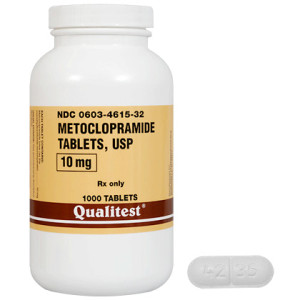 Plaintiff alleged birth defects from the prescription of metoclopramide, off-label, to control nausea during pregnancy. The prescribing doctor gave “unequivocal” deposition testimony that he chose the medicine because of his clinical experience, and had no contact with marketing efforts by the drug manufacturer. Accordingly, preempted or not, plaintiff’s claims failed for lack of causation. Whitener v. Pliva, Inc., No. 14-30468 (April 9, 2015, unpublished).
Plaintiff alleged birth defects from the prescription of metoclopramide, off-label, to control nausea during pregnancy. The prescribing doctor gave “unequivocal” deposition testimony that he chose the medicine because of his clinical experience, and had no contact with marketing efforts by the drug manufacturer. Accordingly, preempted or not, plaintiff’s claims failed for lack of causation. Whitener v. Pliva, Inc., No. 14-30468 (April 9, 2015, unpublished).
The Fifth Circuit has withdrawn its high-profile opinion (as to damages) in Forte v. Wal-Mart Stores, which found that civil penalties were not available absent actual damages in a suit under a Texas statutory cause of action about optometry. The controlling issues have now been certified to the Texas Supreme Court.
The fault, dear Brutus, is not in our proof, but in our pleadings, that they fail Twombly.
January 6, 2015The plaintiff in Wooten v. McDonald Transit Assocs. sued for age discrimination and the defendant defaulted. The trial court received damages evidence and entered judgment for the plaintiff. The defendant then appeared – unsuccessfully – but obtained reversal from the Fifth Circuit. No. 13-11035 (Jan 2, 2015).
“On appeal, the [defaulted] defendant, although he may not challenge the sufficiency of the evidence, is entitled to contest the sufficiency of the complaint and its allegations to support the judgment.” Here, the majority saw the pleading as a “threadbare recital of a cause of action,” especially weak as to causation. At the hearing, however, “[P]laintiff’s live testimony provides sufficient evidence of each of the elements of his ADEA cause of action to support the entry of default.”
After a careful review of the language of the rules, precedent, and policy, the majority emphasized the pleadings over the evidence: “As there can be no judgment absent competent pleadings, it strains the text of [Rule 55] to suppose that this investigatory power encompasses the adduction of facts necessary to render the pleadings competent in the first place.” The trial court should have either dismissed or, in one of various ways, ordered amendment of the pleadings and afforded the defendant the chance to answer them. A dissent found that “[t]his result is inordinately lopsided and, even worse, favors the wearer of the black hat over the wearer of the white hat.”
The same week as 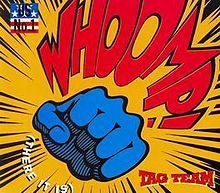 the en banc vote in the whooping crane litigation, the Fifth Circuit analyzed “Whoomp! (There It Is).” The unfortunate song has been mired in copyright infringement litigation for a decade; the district court entered judgment for the plaintiff for over $2 million, and it was affirmed in Isbell v. DM Records, Inc., Nos. 13-40787 and 14-40545 (Dec. 18, 2014). [The opinion notes: “The word “‘Whoomp!’ appears to be a neologism, perhaps a variant of ‘Whoop!,’ as in a cry of excitement.”]
the en banc vote in the whooping crane litigation, the Fifth Circuit analyzed “Whoomp! (There It Is).” The unfortunate song has been mired in copyright infringement litigation for a decade; the district court entered judgment for the plaintiff for over $2 million, and it was affirmed in Isbell v. DM Records, Inc., Nos. 13-40787 and 14-40545 (Dec. 18, 2014). [The opinion notes: “The word “‘Whoomp!’ appears to be a neologism, perhaps a variant of ‘Whoop!,’ as in a cry of excitement.”]
The main appellate issue was a variant of a frequently-litigated topic — the role of extrinsic evidence in contract interpretation. The assignment in question was governed by California law, which the Court found to “employ[] a liberal parol evidence rule” with respect to consideration of extrinsic evidence. The appellant argued that the district  court erred “in interpreting the Recording Agreement without asking the jury to make any findings on the extrinsic evidence.” The Court disagreed, finding that the record did not present “a question of the credibility of conflicting extrinsic evidence” (emphasis in original): “The only dispute is over the meaning of the Recording Agreement and the inferences that should be drawn from the numerous undisputed pieces of extrinsic evidence. This is a question of law for the court, not for a jury.”
court erred “in interpreting the Recording Agreement without asking the jury to make any findings on the extrinsic evidence.” The Court disagreed, finding that the record did not present “a question of the credibility of conflicting extrinsic evidence” (emphasis in original): “The only dispute is over the meaning of the Recording Agreement and the inferences that should be drawn from the numerous undisputed pieces of extrinsic evidence. This is a question of law for the court, not for a jury.”
 The Fifth Circuit revised its earlier opinion in Aransas Project v. Shaw, No. 13-40317 (Dec. 15, 2014) and also denied en banc review over a dissent joined by three judges (with a fourth also voting for review). The Court continues to hold that the plaintiff failed to establish proximate cause in an environmental case about the environment for whooping cranes. The points of division are whether the panel “independently weighs facts to render judgment in violation of fundamental principles of federal law,” or simply finds that “the record permits only one resolution of the factual issue after the correct law is applied”; a related issue is whether rendition or remand is the appropriate appellate remedy for fact findings premised on an error of law.
The Fifth Circuit revised its earlier opinion in Aransas Project v. Shaw, No. 13-40317 (Dec. 15, 2014) and also denied en banc review over a dissent joined by three judges (with a fourth also voting for review). The Court continues to hold that the plaintiff failed to establish proximate cause in an environmental case about the environment for whooping cranes. The points of division are whether the panel “independently weighs facts to render judgment in violation of fundamental principles of federal law,” or simply finds that “the record permits only one resolution of the factual issue after the correct law is applied”; a related issue is whether rendition or remand is the appropriate appellate remedy for fact findings premised on an error of law.
 Consistent with a 2014 line of cases that reversed summary judgments on credibility issues, the Fifth Circuit reversed a summary judgment for the insurer in a bad faith case in Santacruz v. Allstate Texas Lloyds, No. 13-10786 (Nov. 13, 2014, unpublished). The insured alleged inadequate investigation into her claim of covered wind damage to her home, and the Court found fact issues on two matters.
Consistent with a 2014 line of cases that reversed summary judgments on credibility issues, the Fifth Circuit reversed a summary judgment for the insurer in a bad faith case in Santacruz v. Allstate Texas Lloyds, No. 13-10786 (Nov. 13, 2014, unpublished). The insured alleged inadequate investigation into her claim of covered wind damage to her home, and the Court found fact issues on two matters.
First, as to liability for bad faith, the Court noted: “The extent of Allstate’s inquiry into the claim consisted of its adjuster taking photographs of the damaged home. Significantly, Allstate did not attempt to talk to the contractor, who submitted an affidavit in this case describing what he observed concerning the roof and attributing the cause to wind damage. Nor is there any evidence showing that Allstate obtained weather reports or inquired with neighbors to see if they suffered similar damage, which would tend to show the damage was caused by wind rather than normal wear and tear.”
Second, as to damages, the Court said: “Santacruz claimed three types of damages: (1) the replacement of the roof, supported by an invoice from Pedraza providing that Santacruz paid him $3,900 to repair the roof; (2) a list of damaged personal and household items compiled by Santacruz and his family with an estimate of the value of all the belongings; and (3) repair work needed for the damaged interior of the home, supported by an estimate from a contractor listing the repairs to be done. Further, Pedraza submitted an affidavit testifying to the necessity of repairing the roof, and Santacruz submitted photographs showing the extensive damage to the home’s interior to support his claim that repairs were necessary.”
Because the Fifth Circuit rarely acts en banc in business-related cases, votes by the full court on civil matters deserve careful review as examples of the judges’ broader philosophical leanings. As detailed in another post, I place particular emphasis on (1) the vote to deny en banc review in the Daubert case of Huss v. Gayden (balancing judicial authority with the jury’s); (2) the vote to grant mandamus relief in the venue dispute of In re Volkswagen (balancing appellate authority with that of the trial court); and (3) the 7-8 vote to deny en banc review in the venue case of In re Radmax (same).
The issue in the recent en banc case of McBride v. Estis Well Service, LLC, No. 12-30714 (revised Oct. 24, 2014), while facially addressing an important but technical issue of admiralty law, offers insight about the judges’ views of another topic — the authority of the judiciary as opposed to Congress’s. The introduction to Judge Higginson’s dissent succinctly captures that point: “The question presented by this case is whether seamen may recover punitive damages for their employer’s willful and wanton breach of the general maritime law duty to provide a seaworthy vessel. Because the Supreme Court has said that they can, and Congress has not said they can’t, I would answer in the affirmative, and REVERSE.”
Nine judges (spread across three opinions) saw the answer differently. The conclusion to the majority opinion begins: “In the words of the Supreme Court, ‘Congress has struck the balance for us.'” (citing Mobil Oil Corp. v. Higginbotham, 436 U.S. 618, 623 (1978)). Two concurrences make similar observations. Notably, all of the active judges appointed by a Democratic president at the time of en banc submission are in dissent.
Dawna Casey’s family sued Toyota, alleging that the airbag in a 2010 Highlander did not remain inflated for six seconds and caused her death in an accident. The district court granted judgment as a matter of law and the Fifth Circuit affirmed. Casey v. Toyota Motor Engineering & Manufacturing, No. 13-11119 (Oct. 20, 2014).
As to the claim of manufacturing defect, the Court observed: “Casey . . . established only that the air bag did not remain inflated for six seconds,” and relied on alleged violations of Toyota’s performance standards to prove a defect (rather than a technical explanation of the bag’s performance). The Court rejected those allegations under Texas law and precedent from other jurisdictions: “Each piece of evidence submitted by Casey on this point is result-oriented, not manufacturing-oriented, and provides no detail on how the airbag is constructed.”
As to the claim of design defect, Casey relied primarily on a patent application for an allegedly superior design, which the Court rejected as not having been tested under comparable conditions, and as lacking a real-world track record as to feasibility, risk-benefit, and other such matters. Law360 has written a summary of the opinion.
The Fifth Circuit affirmed liability under the Texas fraudulent transfer statute as to several investors who actually earned returns from the Ponzi scheme run by Allen Stanford. Janvey v. Brown, No. 13-10266 et al. (Sept. 11, 2014). First, the Court dismissed a choice-of-law issue as presenting a “false conflict,” since Antigua had no real interest in the application of its laws to the Stanford scheme when compared to Texas. The Court then endorsed the district court’s approach to the situation, which found that the investors gave reasonably equivalent value to the extent they received back their principal, while requiring the return of interest: “allowing [them] to keep their fraudulent above-market returns in addition to their principal would simply further victimize the true Stanford victims, whose money paid the fraudulent interest.”
In Ferrara Fire Apparatus, Inc. v. JLG Industries, Inc., the Fifth Circuit returned to ground surveyed by the American Law Institute’s Restatement (Third) of Restitution, which the Court recently visited in cases about a faithless employee and the payment of benefits to a seaman. Here, Gradall Industries manufactured a specialized boom called the “Strong Arm,” designed for firefighting, and Ferrara Fire Apparatus contracted to serve as its exclusive sales representative. The relationship soured, Gradall terminated the contract, and Ferrara sued. Ferrara obtained judgment for unjust enrichment for $1 million. The Fifth Circuit reversed, finding no evidence of “an absence of justification or legal cause for the enrichment” as required by Louisiana law: “Gradall was simply competing in the market, which it was entitled to do after ending its exclusive contract with Ferrara.” No. 13-30600 (Sept. 9, 2014, unpublished).
In Forrte v. Wal-Mart Stores, Inc., the Fifth Circuit affirmed a finding of liability under the Texas Optometry Act, based on dealings between Wal-Mart and optometrists who leased space in its stores. No. 12-40854 (revised, Aug. 25, 2014). While the plaintiff optometrists did not claim actual damages, they obtained judgment for over $1,000,000, plus attorneys fees, based on mandatory statutory penalties. Noting that the Act used the phrase “civil penalty,” the Fifth Circuit found that the damages fell within the cap set by Section 41.008(b) of the Civil Practice & Remedies Code — “two times the amount of economic damages [plus] economic damages.” In this case, that was zero, since the plaintiffs sought no other recovery. The Court distinguished Vanderbilt Mortgage v. Flores, 692 F.3d 358 (5th Cir. 2012), based on the terms of the statutes at issue. As the Texas Lawbook notes, this opinion has the potential to introduce uncertainty into other “Private Attorney General” statutes in Texas.
The trustee of a litigation trust formed from the bankruptcy of Idearc, Inc. sued its former parent, Verizon, alleging billions of dollars in damages in connection with its spinoff. After a bench trial and several other orders, the district court ruled in favor of defendants, and the Fifth Circuit affirmed in U.S. Bank, N.A. v. Verizon Communications, No. 13-10752 (revised Sept. 2, 2014).
The opinion, while lengthy, still only hints at the complexity of the case, and much of its analysis is fact-specific. Some of the issues addressed include:
1. A bankruptcy litigation trust does not have a right to jury trial on a fraudulent transfer claim, when the defendant creditor has filed a proof of claim in the bankruptcy, and the bankruptcy court must resolve whether a fraudulent transfer occurred to rule on that claim (analyzing and applying Langemkamp v. Culp, 498 U.S. 42 (1990), in light of Stern v. Marshall, 131 S. Ct. 2594 (2011)).
2. In the context of determining whether the district court reviewed an earlier ruling correctly, on pages 26-27, the Court provided crisp definitions of the basic concepts of dictum and holding.
3. In the course of rejecting an argument about the refusal to admit several pieces of evidence, the Court noted that the trustee “does not discuss how each specific piece of evidence was likely to affect the outcome of the trial, in light of all the evidence presented.”
4. A defense expert, without experience in the particular industry, was still qualified to speak to valuation methodology in the bench trial, and “we cannot reverse the district court for adopting one permissible view over the other.”
5. The Court thoroughly reviewed the fiduciary duties owed from a parent to a subsidiary under Delaware law, while affirming the district court’s conclusions about causation associated with their alleged breach.
At issue in Meadaa v. K.A.P. Enterprises LLC was the relative liability of three defendants for a $3.5 million claim. No. 12-30918 (July 1, 2014). In a summary judgment affidavit, an expert opined that transactions of Defendant 1 had not resulted in unfair advantage to Defendants 2 and 3, and had kept its affairs separate from those of Defendant 4. The expert had reviewed financial documents from Defendant 1 and tax returns from Defendant 4. The Fifth Circuit found no clear error in the district court’s striking of this affidavit for a lack of personal knowledge. Because “[i]t is by no means clear how a [CPA] can obtain personal knowledge of the effects of the actions of one entity on other parties without reviewing the latter’s financial documents,” it was “incumbent upon him to explain how he acquired such knowledge.” As a procedural matter, the Court also found that a notice of appeal from a final judgment encompassed a later ruling on a Rule 59 motion.
Plaintiff recovered $12,200 in actual damages and $40,000 in punitives on his claim for race discrimination, and the Fifth Circuit affirmed in all respects. Rhines v. Salinas Construction Technologies, Ltd. (June 25, 2014, unpublished). On the punitive damages award, the Court noted this evidence: (1) the employer falsely told the EEOC that plaintiff had not complained about the workplace; (2) an employee admitted at trial that he signed a false affidavit about the use of racial slurs in the workplace; and (3) “the person who allegedly performed the [employer’s] investigation testified before the jury that he did not investigate.” As the Court dryly summarized: “There was sufficient evidence to support the jury’s award of punitive damages.”
Aspen Technology Inc v. M3 Technology Inc. affirmed an $11 million judgment in a suit to enforce a noncompetition agreement. Nos. 12-20388 & 13-20268 (May 29, 2014, unpublished). Most of the grounds are fact-specific and substantially influenced by spoliation matters. On a key copyright issue, the Court held: “Aspen’s registration of its derivative materials permits Aspen to bring a claim that M3 had infringed preexisting versions of its software,” aligning the Fifth Circuit with several other courts that have addressed the point. The Court removed roughly $500,000 in attorneys fees arising in prior litigation from the award for tortious interference, noting that the opposing party in that litigation was also a party in this case, removing the fee claim from the “equitable exception” to the rule that a contract or statute must allow recovery of fees.
The plaintiffs in Garziano v. Louisiana Log Home, Inc. made 88 percent of the installment payments for a build-it-yourself log cabin kit, and then defaulted. No. 13-60291 (May 29, 2014, unpublished). The log cabin company won summary judgment against several contract and tort claims by the purchasers. Before final judgment was entered, however, it came to light that the company had resold several of the logs and actually was ahead on the transaction overall. The district court denied a Rule 59(e) motion about this information and entered judgment. The Fifth Circuit reversed, finding that the district court should not have focused on plaintiffs’ erroneous characterization of the issue as “unjust enrichment,” and by doing so, “essentially granted LLH an impermissible double recovery—making the earnest money provision an unenforceable penalty.” The Court remanded “with instructions for the district court to make findings on the amount of actual damages that LLH suffered and to amend the judgment to remit to the Garzianos any monies paid to LLH under the contract that were in excess of LLH’s actual damages.” (The defendant offers several packages for log homes, all of which look elegant and cost-effective to this author.)
The defendant in Advanced Nano Coatings, Inc. v. Hanafin “entered into an employment agreement with [plaintiff] in which [defendant] agreed to devote 100% of his professional time and effort to [plaintiff] or its subsidiary . . . .” No. 13-20109 (Feb. 19, 2014, unpublished). “The district court . . . found that Hanafin breached his fiduciary obligations . . . a finding Hanafin does not dispute on appeal.” Quoting ERI Consulting Engineers v. Swinnea, 318 S.W.3d 867, 872 (Tex. 2010), the Fifth Circuit noted that under Texas law, “if the fiduciary . . . acquires any interest adverse to his principal, without a full disclosure, it is a betrayal of his trust and a breach of confidence, and he must account to his principal for all he has received.” The Court then held: “Accordingly, [defendant’s] breach of fiduciary duties obligates him to repay everything he gained by virtue of his position, including payments for his salary and any expenses he may have incurred.”
The plaintiff in Sanders v. Flanders alleged legal malpractice arising from the handling of patent applications. The Fifth Circuit did not engage the question whether he had shown lost profits with reasonable certainty, noting: “[C]ounsel admitted during oral argument that [Plaintiff] did not make any offer of proof concerning the lost-profit evidence that he would have otherwise presented but for the district court’s hearsay ruling.” No. 13-50235 (April 22, 2014, unpublished).
At issue in Hess Management Firm, LLC v. Bankston were the damages arising from the termination of a contract about the operation of a gravel pit (sadly, not a magical gravel pit of rule-against-perpetuities lore). No. 12-31016 (April 18, 2014). The dispute was whether damages were capped at 180 days — the contract term for adequate notice of closure — or whether the closure of the pit was post-breach activity that is not relevant to damage calculation. The Fifth Circuit sided with the bankruptcy court and reversed the district court’s enlargement of the damages, concluding: “A contrary result would defeat the maxim of placing a non-breaching party in the same position they would have been had breach not occurred, and award [plaintiff] more than their expectation interest.”
In Naquin v. Elevating Boats, LLC, the Fifth Circuit found that the verdict and resulting judgment in a Jones Act case erroneously included compensation for mental anguish from seeing the death of another person. No. 12-31258 (March 10, 2014). The Court disposed of the case as follows: “[S]erious practical problems would be presented at trial if we were to save some elements of the damage award and retry only other elements of damage. ‘Where, as here, the jury’s findings on questions relating to liability were based on sufficient evidence and made in accordance with law, it is proper to order a new trial only as to damages.’ We therefore retain the jury’s liability finding but order a new trial on damages.” (quoting Hadra v. Herman Blum Consulting Engineers, 632 F.2d 1242, 1246 (5th Cir. 1980)).
The “ART entities” sued the “Clapper entities” for fraud about a real estate transaction, and they countersued for breach of fiduciary duty. A jury found against both sides. The Clapper entities appealed; the Fifth Circuit reversed on a legal issue and remanded for new proceedings on liability and damages. The ART entities then sought to raise the fraud claim again; the district court found it barred by the mandate rule, and on appeal from the second trial, the Fifth Circuit affirmed. ART Midwest Inc. v. Clapper, No. 11-11140 (Feb. 3, 2014). It reasoned: “We hold that the ART entities’ decision not to cross-appeal the jury’s fraud findings in the first district court proceeding prevented them from raising the same rejected fraud claims in the second district court proceeding. Even though they prevailed on many of their claims in the first district court proceeding, the consensus of circuit authority supports that the ART entities could have filed a ‘protective’ or ‘conditional’ cross-appeal of the adverse fraud finding.” The Court otherwise affirmed, reversing as to one issue relating to “double-counting” of damages in light of the parties’ correspondence.
Waltner v. Aurora Loan Services LLC welcomes the New Year with three bread-and-butter issues in business litigation. No. 12-50929 (Dec. 31, 2013, unpublished). First, a party’s failure to answer on time does not require the “drastic remedy” of a default judgment, especially when a plaintiff shows no prejudice from the failure to timely answer. The granting of a default judgment is a discretionary ruling by the district court. Second, damages for lost use of property are not reliance damages that can be recovered with a promissory estoppel claim. Rather, they are consequential losses — a form of expectation damages. Finally, while Fed. R. Civ. P. 26(g)(2) says that a court “must strike” unsigned discovery responses “unless a signature is promptly supplied” after the error is identified, the district court has discretion in determining what is “prompt” and in what weight to give the lack of prejudice to the opposing party.
A classic problem in restitution law involves how to disgorge profits that result in part from wrongful conduct (i.e., taking a client) and in part from lawful action (i.e., doing quality work for that stolen client). In Gulf & Mississippi River Transp. Co. v. BP Oil Pipeline Co., the Fifth Circuit addressed the profits of a pumping station located on a disputed tract of land. No. 12-30741 (Sept. 18, 2013). Under the distinctive terminology of Louisiana law, the landowner argued that the profits were the “civil fruit” of the tract, and the pump operator argued that they came solely from the operation of the pumping business. The Fifth Circuit remanded for clarification of “whether [the district court] was referring to natural fruits, civil fruits, or both” in its analysis of this point. The discussion of the civil law in this area is difficult to follow because of the unusual vocabulary, but it provides an interesting perspective on a recurring remedies issue.
The plaintiff in Delahoussaye v. Performance Energy Services LLC suffered back injuries while working on a drilling platform when a handrail fell on him. No. 12-31222 (Oct. 24, 2013). The district awarded general damages of $200,000, noting that the plaintiff had exaggerated his complaints of pain and was able to return to work. The award was reviewed for clear error. The Fifth Circuit reviewed prior awards in comparable cases and concluded that $200,000 was excessive in light of the district court’s other fact findings. Reviewing precedent that established a “maximum recovery” guideline based on 133% of the highest previous recovery for a similar injury, the Court remitted the damages to $86,450 (133 percent of $65,000, the highest comparable recovery found by the Court). The plaintiff could accept the remitted award or have a new trial on damages.
The district court handling the Deepwater Horizon litigation rebuffed BP’s complaints that the agreed-upon claims processing formula was not working correctly. Lake Eugenie Land & Development v. BP Exploration & Production, No. 13-30315 (Oct. 2, 2013). A fractured opinion from the Fifth Circuit reversed in substantial part. It required remand for further development of the record on how the agreement was intended to handle several accounting issues about claimed losses. The Court then imposed a “tailored stay” on further payments to “allow[] the time necessary for deliberate reconsideration of these significant issues on remand.” Judge Clement wrote the plurality, which Judge Southwick joined on the foregoing grounds. Her opinion went on to note that, for standing reasons, a court lacked jurisdiction to administer a settlement “that included [class] members that had not sustained losses at all, or had sustained losses unrelated to the oil spill . . . .” Judge Dennis dissented as to the reasons for remand and disagreed with the standing analysis.
While nominally about a limited issue of workers compensation law, Austin v. Kroger Texas LP analyzes basic issues of an “Erie guess,” Texas premises liability law, and the types of negligence claims available in Texas. No. 12-10772 (Sept. 27, 2013). Austin, a Kroger employee, slipped while cleaning an oily liquid with a mop. Contrary to store policy, a product called “Spill Magic” was not available to him that day. After a thorough discussion of the interplay between the common law of premises liability and the Texas workers compensation statutes (Kroger being a non-subscriber), the Fifth Circuit reversed a summary judgment for Kroger that was based on Austin’s subjective awareness of the spill. “Section 406.033(a) of the Texas Labor Code takes the employee’s own negligence off of the table for a non-subscriber like Kroger . . . ” The Court went on to find fact issues about Kroger’s negligence in not having Spill Magic available, and about Kroger’s knowledge of the spill. The Court affirmed dismissal of the gross negligence claim, and in the remand, asked the district court to consider the specific type of negligence claim that Austin asserted under Texas law.
A borrower claimed that a mortgage servicer was unjustly enriched when it obtained an expensive “force-placed” insurance policy on the property. Baxter v. PNC Bank, No. 12-51181 (Sept. 26, 2013, unpublished). The Fifth Circuit reminded that a remedy based on restitution or unjust enrichment is not ordinarily available when an express contract deals with the same subject matter. Here, the deed not only allowed the purchase of force-placed insurance, but warned that the ” “cost of the [forced-placed] insurance might significantly exceed the cost of insurance that [Baxter] could have obtained.”
In a high-profile “data breach” case, the district court dismissed several banks’ claims against a credit card processor after hackers entered its system and stole confidential information. Lone Star National Bank v. Heartland Payment Systems, No. 12-20648 (Sept. 3, 2013). The banks did not have a contract with the processor. They sought money damages for the cost of replacing compromised credit cards and reimbursing customers for wrongful charges. Applying New Jersey law, the Fifth Circuit found that the economic loss rule did not bar a negligence claim on these facts at the Rule 12 stage. These banks were an “identifiable class,” Heartland’s liability would not be “boundless” but run only to the banks, and the banks would otherwise have no remedy. The Court also noted that it was not clear whether the risk could have been allocated by contract. The Court declined to affirm dismissal on several other grounds such as choice-of-law and collateral estoppel, “as they are better addressed by the district court in the first instance.”
The sole issue for bench trial in Union Oil v. Buffalo Marine Services was the amount of damages causedby an oil spill. No. 12-40848 (August 16, 2013, unpublished). Both sides appealed. The Fifth Circuit affirmed. As to the methodology used by the district court, the Court said: “Contrary to Buffalo’s assertion, the ‘reasonable certainty’ with which Unocal was required to prove lost profits did not require it to identify lost opportunities from specific vessels that would have visited the terminal but for its closure following the spill. Considering figures from adjacent months was more than adequate.” The Court found “no support in the actual numbers” for an argument about a seasonal spike in revenue during the relevant period. Finally, the Court agreed that a claim determination from the National Pollution Fund Center was inadmissible as proof of damages under Fed. R. Evid. 408.
A remedy provision of the Anti-Kickback Statute provides: “The Federal Government in a civil action may recover from a person that knowingly engages in conduct prohibited by section [53] of this title a civil penalty equal to— (A) twice the amount of each kickback involved in the violation; and (B) not more than $[11,000] for each occurrence of prohibited conduct . . . .” 41 U.S.C. § 55(a)(1). In United States v. Kellogg Brown & Root, the Fifth Circuit found that the provision allows a suit against an employer for its employees’ acts. No. 12-40447 (July 19, 2013). The Court grounded its analysis in common-law agency principles, and distinguished an earlier case that imposed a “purpose to benefit [the] employer” requirement in a somewhat analogous situation under the False Claims Act, United States v. Ridglea State Bank, 357 F.2d 495 (5th Cir. 1966).
A heavy, awkwardly-shaped boiler fell while being loaded onto a ship and sustained significant damage. The issue in Pt. Jawamanis Rafinasi v. Coastal Cargo Co. was whether a limitation of liability in the Carriage of Goods at Sea Act, inapplicable by its terms to this accident on shore, was nevertheless incorporated in the parties’ contract. No. 12-30668 (July 24, 2013, unpublished). The Court found that the limitation applied because it was included in the shipper’s bill of lading, even though the purchaser of the boiler lacked actual knowledge of the bill’s terms. “Case law in the Fifth Circuit demonstrates that an unissued bill of lading nevertheless binds the parties.” (citing, inter alia, Luckenbach S.S. Co. v. American Mills Co., 24 F.2d 704, 705 (5th Cir. 1928)).
A technical opinion about calculation of a Clean Water Act penalty for a wastewater spill offers two points of broader interest. United States v. Citgo Petroleum, No. 11-31117 (July 17, 2013). First (in the context of a remand for other reasons), as to whether the defendant’s acts amounted to gross negligence rather than simple negligence, the Fifth Circuit emphasized the importance of the defendant’s long delay in taking remedial action. “In our view, though, almost winning a highly risky gamble with the environment does not much affect the egregiousness of having been gambling in the first place.” Second, in reviewing a challenge to the amount of wastewater at issue under the “clear error” standard, the Court reminded: “The government’s argument on this issue is essentially that the court credited the wrong expert. ‘Where there are two permissible views of the evidence, the factfinder’s choice between them cannot be clearly erroneous.'”
In Homoki v. Conversion Services, a check processing company sued its sales agent and a competitor. No. 11-20371 (May 28, 2013). It won judgment for $700,000 against the competitor for tortious interference with the sales agent’s contract with the company, and $2.15 million against the agent for past and future lost profits. The company and competitor appealed. First, the Fifth Circuit — assuming without deciding that the plaintiff had to show the competitor’s awareness of an exclusivity provision in the agent’s contract — found sufficient evidence of such knowledge in testimony and the parties’ course of dealing, and affirmed liability for tortious interference. Second, the Court found that the plaintiff’s “experience in managing his business for sixteen years” supported his damages testimony, and that “[w]hile [plaintiff]’s presentation of its damages evidence was far from ideal,” also found sufficient evidence of causation on the interference claim. Finally, the Court found that the plaintiff had given adequate notice of its claim of conspiracy to breach fiduciary duties (the joint pretrial order was not signed by the judge), but the plaintiff waived jury trial on that issue by not requesting a damages question — particularly given the significant dispute about causation in the evidence presented.
In Colonial Freight Systems v. Adams & Reese, the Fifth Circuit affirmed summary judgment for a law firm on a malpractice claim and for unpaid fees. No. 12-30853 (May 15, 2013, unpublished). The plaintiff claimed, under Louisiana law, that the firm’s “negligent failure to advise the company of its right to a jury” was malpractice. The Court rejected that claim because the plaintiff could only speculate about any loss resulting from that alleged failure. (In the context of criminal law, a different framework applies because the policies at play are different, see United States v. Mendez, 102 F.3d 126 (5th Cir. 1996)).
In Miller v. Raytheon Co., the Fifth Circuit affirmed liability for age discrimination and affirmed in part on damages. No. 11-10586 (revised, July 30, 2013). Among holdings of broader interest in civil litigation, the Court: (1) affirmed the verdict of liability, noting: “Considered in isolation, we agree with Raytheon that each category of evidence presented at trial might be insufficient to support the jury’s verdict. But based upon the accumulation of circumstantial evidence and the credibility determinations that were required, we conclude that ‘reasonable men could differ’ about the presence of age discrimination”; (2) reversed an award of mental anguish damages because “plaintiff’s conclusory statements that he suffered emotional harm are insufficient”; and (3) rejected a challenge, based on the Texas Constitution, to the statutory punitive damages cap in the TCHRA.
In Wellogix, Inc. v. Accenture, LLP, LLP the district court entered judgment for the plaintiff — $26.2 million in compensatory damages and $18.2 million in punitives, after a remittitur — in a trade secrets case about software to make oil exploration more efficient. No. 11-20816 (May 15, 2013, revised Jan. 15, 2014). Affirming, the Court: (1) reminded, in the opening paragraph, of the deference due to a jury verdict; (2) detailed the sufficient evidence before the jury of a trade secret, of its inappropriate use by the defendant, of damages, and malice; (3) rejected Daubert arguments about the scope of the plaintiff’s computer science expert’s testimony and the material considered by its damages expert; and (4) affirmed the punitive damages award because it was less than the compensatory damages and the issue of “reprehensibility” was neutral. The Court also analyzed aspects of the relationship between trade secret claims and the patent process. Footnote 4 of the opinion provides a useful guide to the federal courts’ treatment of a “Casteel problem” in Texas jury submissions.
Wagner v. BellSouth Telecommunications underscores a recent holding that a reduced credit rating is not enough to establish damage under the Fair Credit Reporting Act. 12-31080 (April 5, 2013, unpublished). The opinion also reminds that to recover mental anguish damages under the FCRA, a plaintiff must offer “evidence of genuine injury, such as the evidence of the injured party’s conduct and the observations of others,” and to demonstrate “a degree of specificity which may include corroborating testimony or medical or psychological evidence in support of the damage award.” (quoting Cousin v. Trans Union Corp., 246 F.3d 359, 371 (5th Cir. 2001)). The Court also reviewed basic limitations principles under the FCRA and its Louisiana state analog.
The ALI’s publication of the Restatement (Third) of Restitution in 2011 stirred interest in the important but arcane principles that define unjust enrichment. The Fifth Circuit addressed a classic restitution situation in Boudreaux v. Transocean Deepwater, Inc., No. 12-30041 (March 14, 2013). A seaman sought recovery for maintenance and cure after an injury; Transocean successfully established a defense based on the seaman’s failure to disclose a previous medical condition; and Transocean sought restitution of money paid earlier. The majority rejected Transocean’s position, finding a lack of support in prior case law, and noting that the scienter element of Transocean’s defense was less demanding that a common-law fraud claim. (“We are offered no reason to depart from precedent. There is only the change of advocates and judges, by definition irrelevant to the settling force of past jurisprudence — always prized but a treasure in matters maritime.”) A dissent, briefly citing the Restatement, argued that one other circuit had endorsed such a claim, and that allowing the claim struck the proper policy balance.
The plaintiff in Smith Maritime v. L/B KAITLYN EYMARD sought recovery for property damage and lost profits from allegedly negligent welding on a crane on a boat. No. 12-30378 (Jan. 3, 2013, publication ordered March 11, 2013) The Fifth Circuit found the plaintiff’s tort claims for economic loss barred by East River Steamship Corp. v. Transamerica Delaval, which “held that a manufacturer in a commercial relationship has no duty under either a negligence or strict products-liability theory to prevent a product from injuring itself.” 476 U.S. 858, 871 (1986). The Court concluded that “modification of a vessel,” as distinguished from its “manufacture or repair,” was “a distinction without a difference” for purposes of East River. The Court recognized that the errant crane had damaged living quarters that were being added to the vessel, but those quarters were not “other property” outside the East River doctrine given the wording of the parties’ Asset Purchase Agreement.
Con-Drive contracted to provide an offshore diving system to ARV Offshore, did not perform, and was found liable for millions of dollars that it cost ARV to arrange a substitute system for an oil-drilling project. ARV Offshore Co. v. Con-Dive LLC, No. 12-20098 (Feb. 22, 2013, unpublished). A key damage issue was whether ARV was reimbursed by its customer for a substantial amount of the costs for the substitute. The Fifth Circuit affirmed the judgment, noting a potential waiver issue because Con-Dive had not adequately pleaded offset as a defense, and found that the relevant testimony from an ARV representative was “non-specific and did not establish a basis for the district court to recompute the damage amount.” The opinion is fact-specific but this observation has broader applicability in commercial damages litigation.
The case of Tekelec, Inc. v. Verint Systems, Inc. presented a contract dispute, sufficiently intricate that the Court attached a four-color chart to its opinion to illustrate the facts. No. 11-40418 (Feb. 13, 2013). In affirming summary judgment for the plaintiff on largely case-specific grounds, the Court reached two principal holdings: (1) an assignee has a right to enforce a payment obligation even if the contract documents do not create an express enforcement right, and (2) the contract payments were not “royalties or other patent damages” within the specific context of these parties’ dealings, or as the terms “royalty” and “reasonable royalty” are generally understood. The first holding draws upon the general principle in Texas law that a contract construction leading to an exclusive remedy is disfavored unless that intent is clearly stated; an issue arising in contract litigation generally when potential equitable remedies are evaluated.
The defendant in Factory Mutual Insurance v. Alon USA stipulated to liability after an explosion at a waste treatment plant. The remaining issue was whether fair market value of the plant was the cost to replace it (roughly $6 million) or the cost of the plant’s component parts (roughly $900,000). No. 11-11080 (Jan. 23, 2013). Under deferential clear error and abuse-of-discretion standards of review, the Fifth Circuit affirmed the district court’s conclusions that: (1) the plant system was unique and the cost of its components did not fairly estimate its value (distinguishing Hartford Ins. Co. v. Jiminez, 814 S.W.2d 551 (Tex. App.–Houston [1st Dist.] 1991, no pet.)); (2) the plaintiff’s expert “educated and interviewed . . . employees” about a key depreciation issue, and thus “did more than just repeat information gleaned from external sources” (distinguishing U.S. v. Mejia, 545 F.3d 179 (2d Cir. 2008)); and (3) the multiplier used to reflect installation expenses was “entirely reasonable[,]” “[g]iven the lack of useful records and resources pertaining to this particular . . . plant.”
The sales agreement for two tugboats provided for $250,000 in liquidated damages if the boat was used in violation of a noncompetition provision. International Marine LLC v. Delta Towing LLC, No. 12-30280 (Jan. 8, 2013). The Fifth Circuit applied federal admiralty law, using section 356 of the Second Restatement of Contracts as the guide, and placing the burden on the party seeking to invalidate the provision as a penalty. The Court quickly concluded that the second factor of that section — difficulty in proving damages — was established by evidence about the nature of the boat charter business to which the clause applied. Id. at 9. The Court also found that the first factor — reasonableness of the estimated anticipated loss — was satisfied by evidence about the range of expected fees and contract duration. Id. at 9-10. (citing Farmers Exp. Co. v. M/V Georgis Prois, 799 F.2d 159 (5th Cir. 1986)). The clause was thus enforceable.
The plaintiff in Smith v. Santander Consumer USA received $20,43.59 in damages for violation of the Fair Credit Reporting Act. No. 12-50007 (Dec. 20, 2012). The Fifth Circuit agreed that damages were not recoverable solely for a reduced line of credit, but found sufficient other evidence about harm to the plaintiff’s business and personal finances to affirm. Enthusiasts of appellate arcana will find it interesting to compare the Court’s analysis of a general federal verdict under the Boeing standard with the Texas damages submissions required by Harris County v. Smith, 96 S.W.3d 230 (Tex. 2002) (applying Crown Life Ins. v. Casteel, 22 S.W.3d 378 (Tex. 2000)).
The plaintiff in Arthur J. Gallagher & Co. v. Babcock obtained a $1.2 million judgment for violation of a noncompetition agreement in the insurance field. No. 11-30452 (Dec. 18, 2012). The Fifth Circuit affirmed the enforceability of the agreement. As to its substance, the Court held that Gallagher’s prohibition of employees from competing for accounts on which they actually worked at Gallagher was “less restrictive than allowed under state law.” As to geographic scope, the Court affirmed the district court’s narrowing of the provision from 64 parishes to the 9 in which Gallagher actually provided insurance services. The Court vacated the damages because the key witness conflated (a) the group of clients who chose to leave Gallagher after the employee left with (b) the group of clients who actually followed Gallagher to his new employer. See id. at 18 (“Defendants did not breach their agreements by leaving GBSI, but by accepting work from clients who departed along with them.”)
The plaintiff in Coe v. Chesapeake Exploration won a $20 million judgment for breach of a contract to buy rights in the Haynesville Shale formation, against the background of a a “plummet[]” in the price of natural gas. No. 11-41003 (Sept. 12, 2012). The Fifth Circuit affirmed. After review of other analogous energy cases, the Court found that the parties’ writing had a sufficient “nucleus of description” of the property to satisfy the Statute of Frauds, even though some review of public records was required to fully identify the property from that “nucleus.” Id. at 11-12. The Court also found that the parties had reached an enforceable agreement and that Plaintiff had tendered performance, finding an “adjustment clause” specifying a per-acre price particularly relevant on the tender issue. Id. at 16, 17-18.
Baisden v. I’m Ready Productions involved several challenges to a defense verdict in a copyright infringement case. No. 11-20290 (Aug. 31, 2012). Among other holdings, the Fifth Circuit reminded that “[c]onsent for an implied [nonexclusive] license may take the form of permission or lack of objection,” making the Copyright Act’s requirement of a writing inapplicable. Id. at 9-10 (reviewing Lulirama Ltd. v. Axcess Broad. Servs., 128 F.3d 872 (5th Cir. 1997)). The Court also reviewed a jury instruction that allegedly conflated the question of license with that of infringement — a potential problem since the burdens are different on the two points — but found that while “the question is not a model of clarity” it did not give rise to reversible error. Id. at 19-21.
“What follows is the tale of competing mineral leases on the Louisiana property of Lee and Patsy Stockman during the Haynesville Shale leasing frenzy.” Petrohawk Properties v. Chesapeake Louisiana at 1, No. 11-30576 (as rev’d Aug. 2012). The Fifth Circuit affirmed a finding that one of the dueling leases was procured by fraudulent misrepresentations as to the legal effect of a lease extension, rejecting several challenges to whether such a representation was actionable under Louisiana law, as well as an argument that the fraud had been “confirmed [ratified].” The Court also rejected a counterclaim for tortious interference with contract, noting that Louisiana has a limited view of that tort and requires a “narrow, individualized duty” between plaintiff and tortfeasor. Id. at 20-24 (citing 9 to 5 Fashions v. Spurney, 538 So.2d 228 (1989)).
In Westlake Petrochemicals v. United Polychem, the plaintiff obtained judgment for $6.3 million under the UCC for breach of a contract to supply ethylene. No. 10-20634 (July 24, 2012). The Fifth Circuit affirmed on liability, finding that evidence about the need for credit approval did not disprove contract formation, defeat the Statute of Frauds, or establish a condition precedent. Id. at 9-13. The Court reversed and remanded on damages, finding that the plaintiff was analogous to a “jobber” and thus could recover lost profits but not the contract-market price differential. Id. at 17 (citing Nobs Chemical v. Koppers Co., 616 F.2d 212 (5th Cir. 1980)). The Court also reversed as to an individual’s guaranty of the damages, finding a conflict between the termination provision of the guaranty and the plaintiff’s argument about when liability accrued, which created an ambiguity that made the guaranty unenforceable under Texas law. Id. at 20-21.
The Fifth Circuit has had a about the application of Daubert, and its effect on the roles of judge and jury. In Huffman v. Union Pacific Railroad, the Court moved to the other end of the technical spectrum, and analyzed the sufficiency of evidence in a FELA case about a former railway worker’s alleged on-the-job injuries. No. 09-40736 (March 13, 2012) After thorough analysis of the worker’s allegations, the Court held that expert testimony on causation was not necessary to support a jury finding for the worker, but found that the worker had not presented enough evidence about the type of injury to satisfy even that standard. Op. at 21-22. Judge Southwick wrote for the majority, joined by Judge Owen, and Judge Dennis dissented. The case analyzes FELA precedent but is of substantially broader interest on general causation issues. The Court also briefly analyzed and rejected a judicial estoppel argument. Op. at 7-8.
The case of Garriott v. NCsoft presented a challenge to a $28 million judgment for breach of an employee’s stock option contract. After resolving a liability issue under South Korean law about the employee’s termination, the Court considered whether the judgment impermissibly considered post-breach stock appreciation. The Court faulted the defendant for not raising its challenge to the damages calculation in a Daubert motion, evidence objection, or charge objection, and rejected the argument under “plain error” review. Op. at 7-9 (“Displeased with the jury’s decision, NCSoft now asks for a mulligan.”) The Court also found sufficient direct evidence, consistent with the expert models, as to when the employee would have sold his shares. Op. at 9 (reminding that damages “may be too speculative if based on ‘assumptions without basis in the real world,'” but that the plaintiff “need not prove damages with mathematical certainty”).
The case of LHC Nashua Partnership Ltd. v. PDNED Sagamore Nashua LLC presented several liability and damages issues in a contract case arising from a real estate development project. While nominally applying New Hampshire law, the Court addressed Texas law because it did not materially differ on the key points. Op. at 8. The Court’s holdings included these: a promissory estoppel claim was not actionable given the scope of the parties’ written contract, op. at 9-10; the plaintiff offered sufficient evidence of justifiable reliance on alleged misrepresentations, op. at 11-13; and a merger clause in the parties’ agreement did not foreclose the misrepresentation claim, op. at 13-14. The Court’s analysis of the merger clause focused on the recent Texas Supreme Court case of Italian Cowboy Partners v. Prudential, which substantially clarified Texas law in that area. The Court affirmed an award of reliance damages but reversed an award of $25 million in lost profits, stating that the contract induced by fraud “contemplated a future closing transaction”; therefore, “[Plaintiff] cannot recover lost profits flowing from an agreement to purchase property that never closed due to the failure of that agrement’s express conditions.” Op. at 21-23.